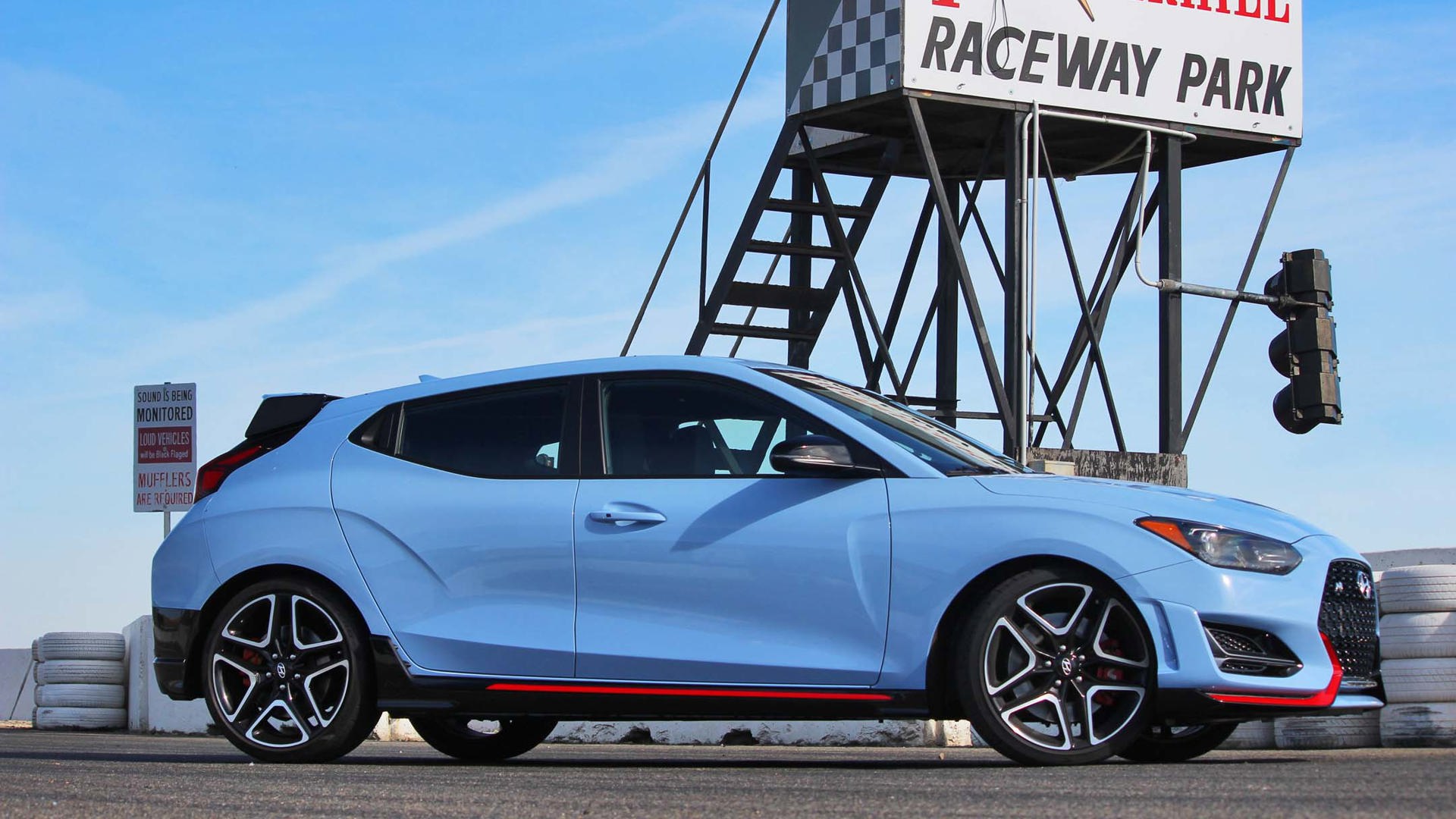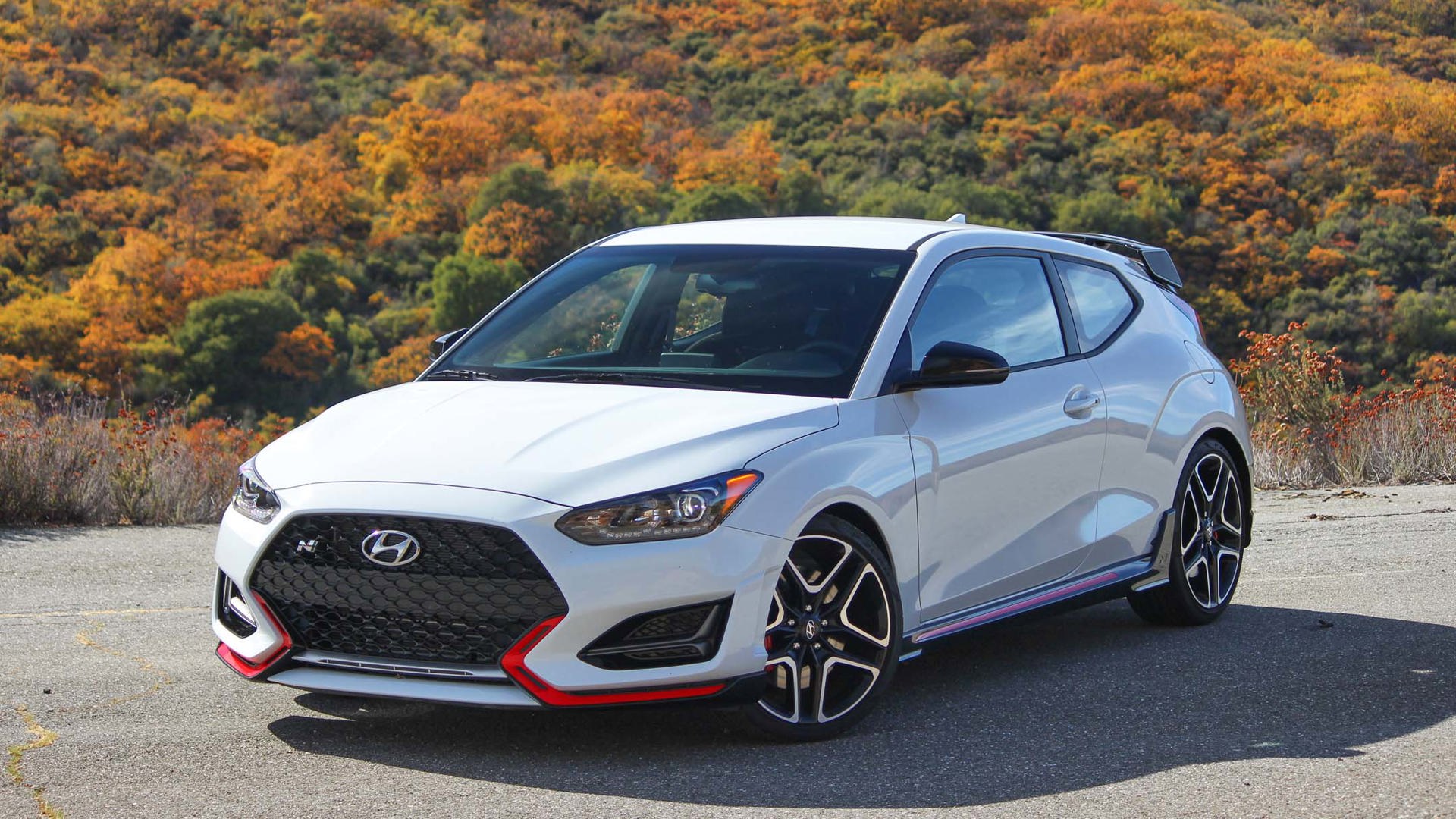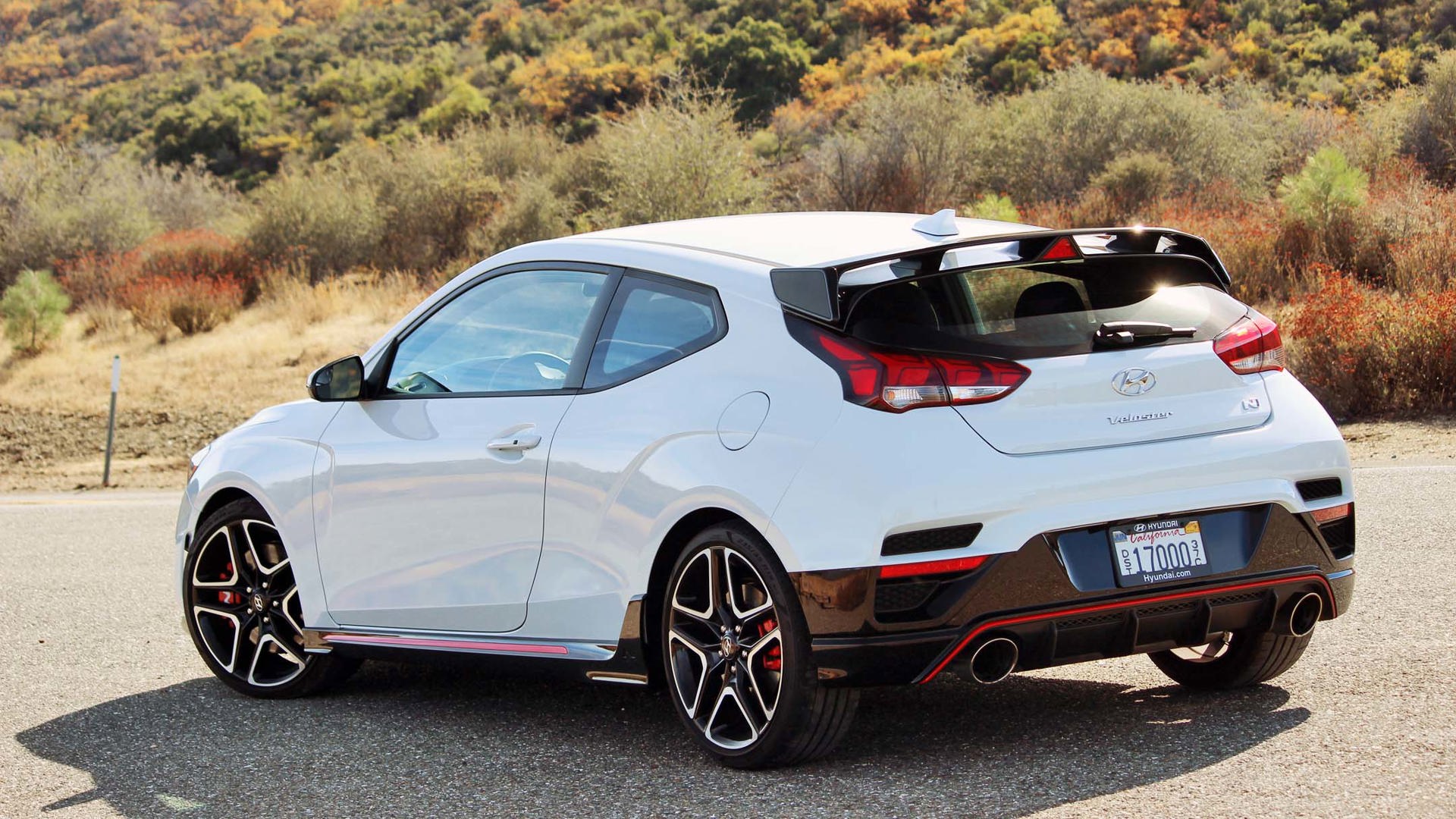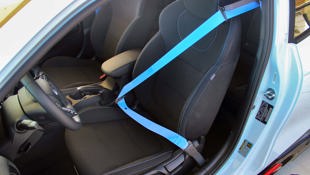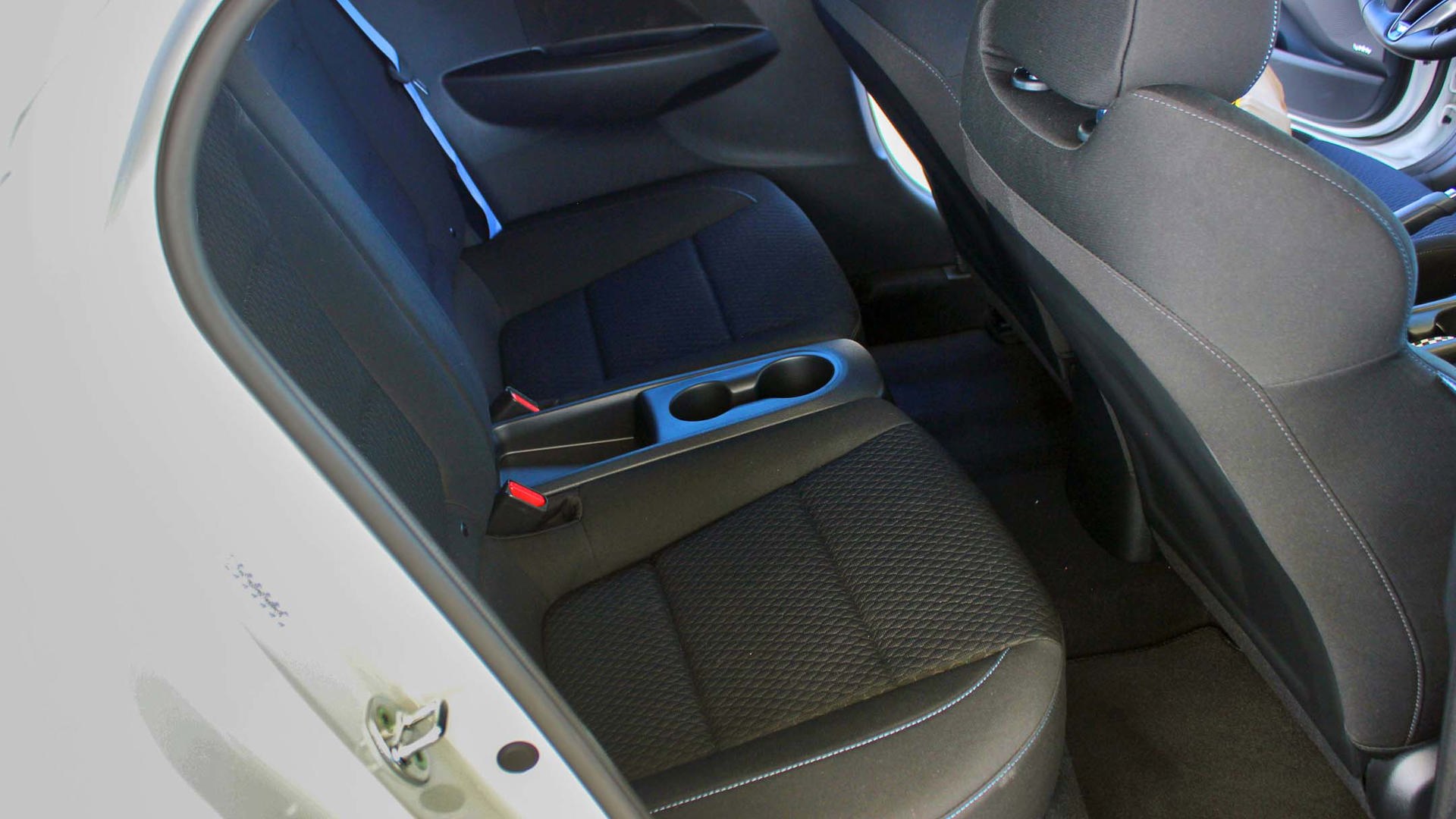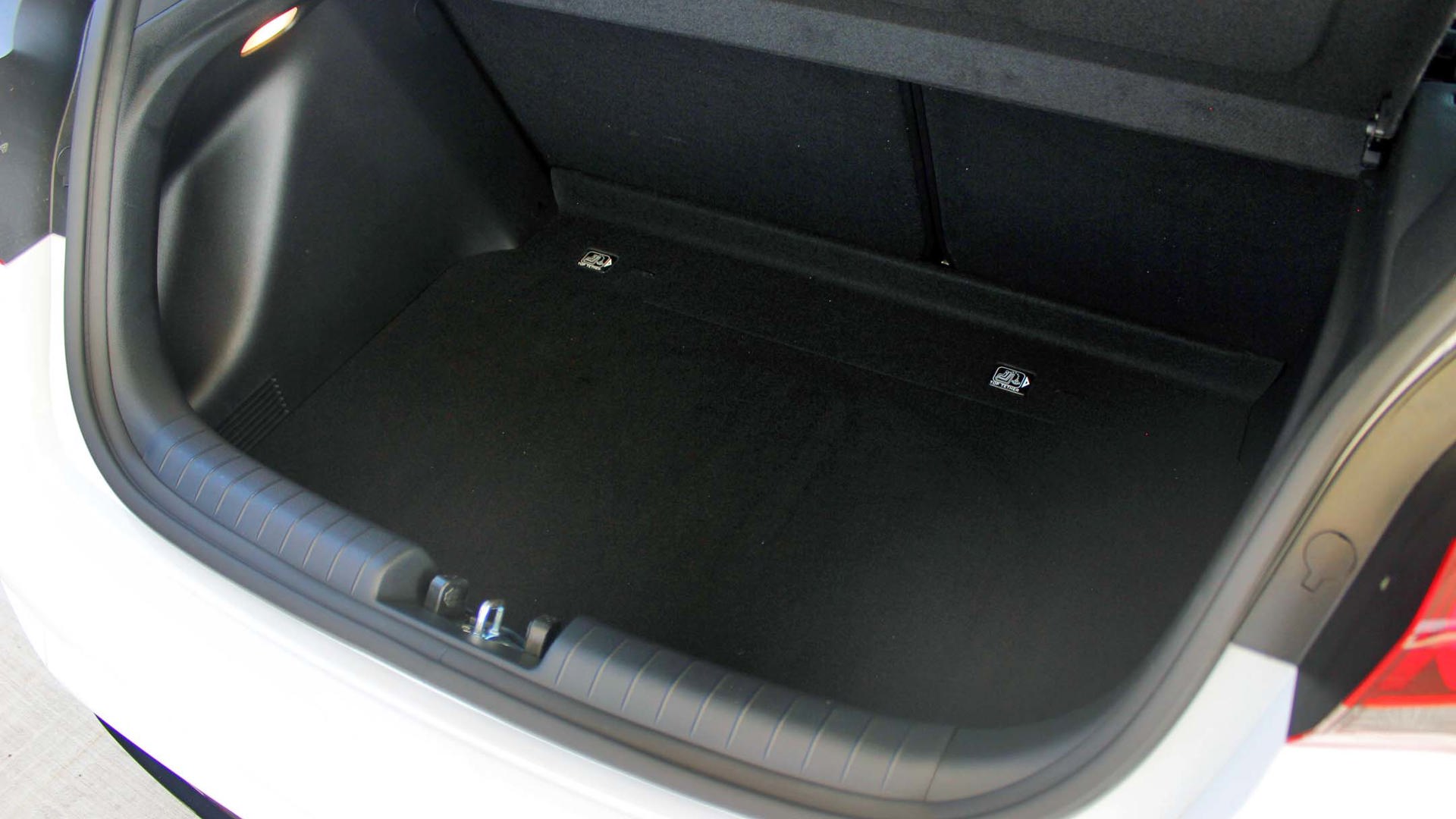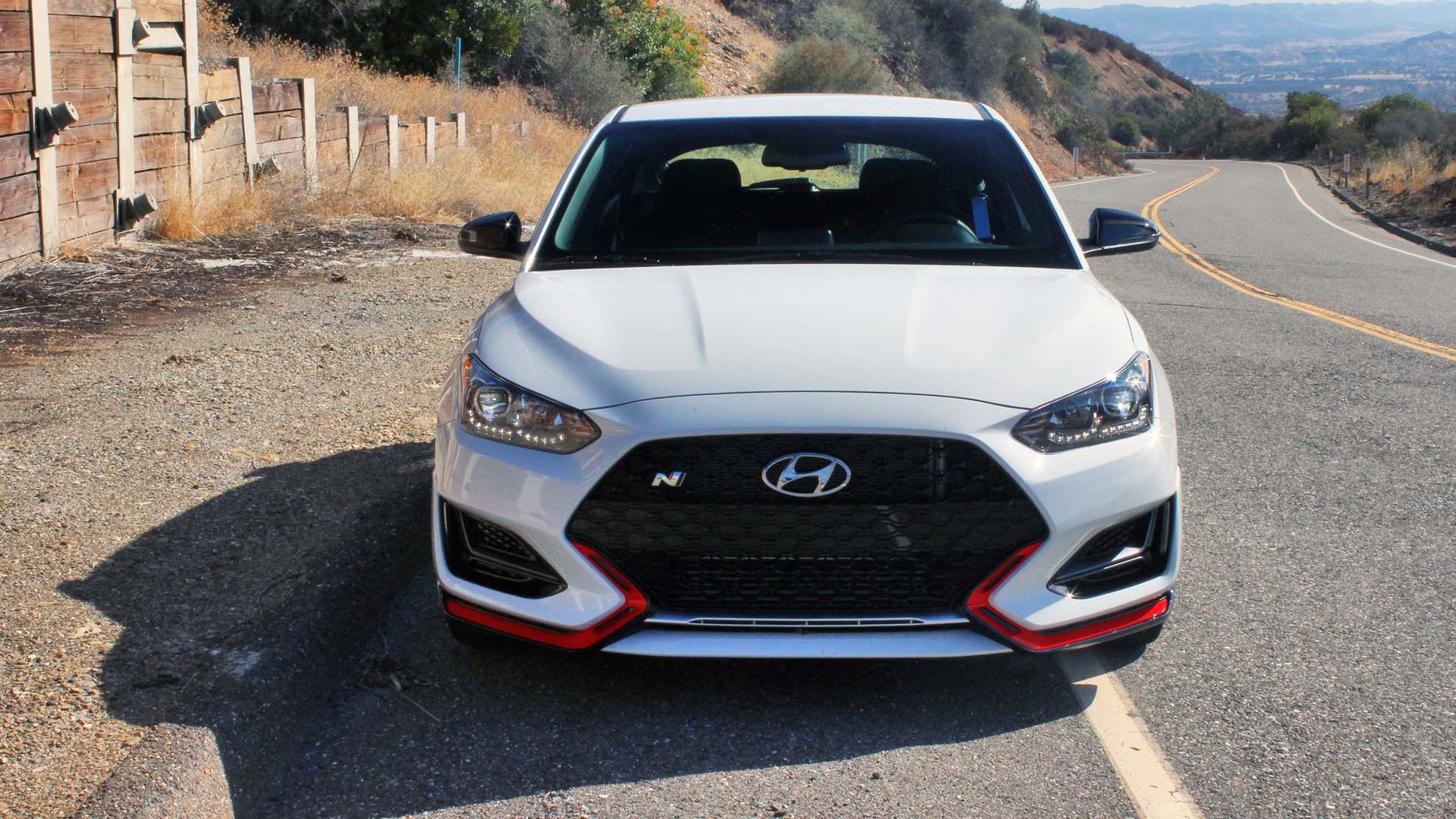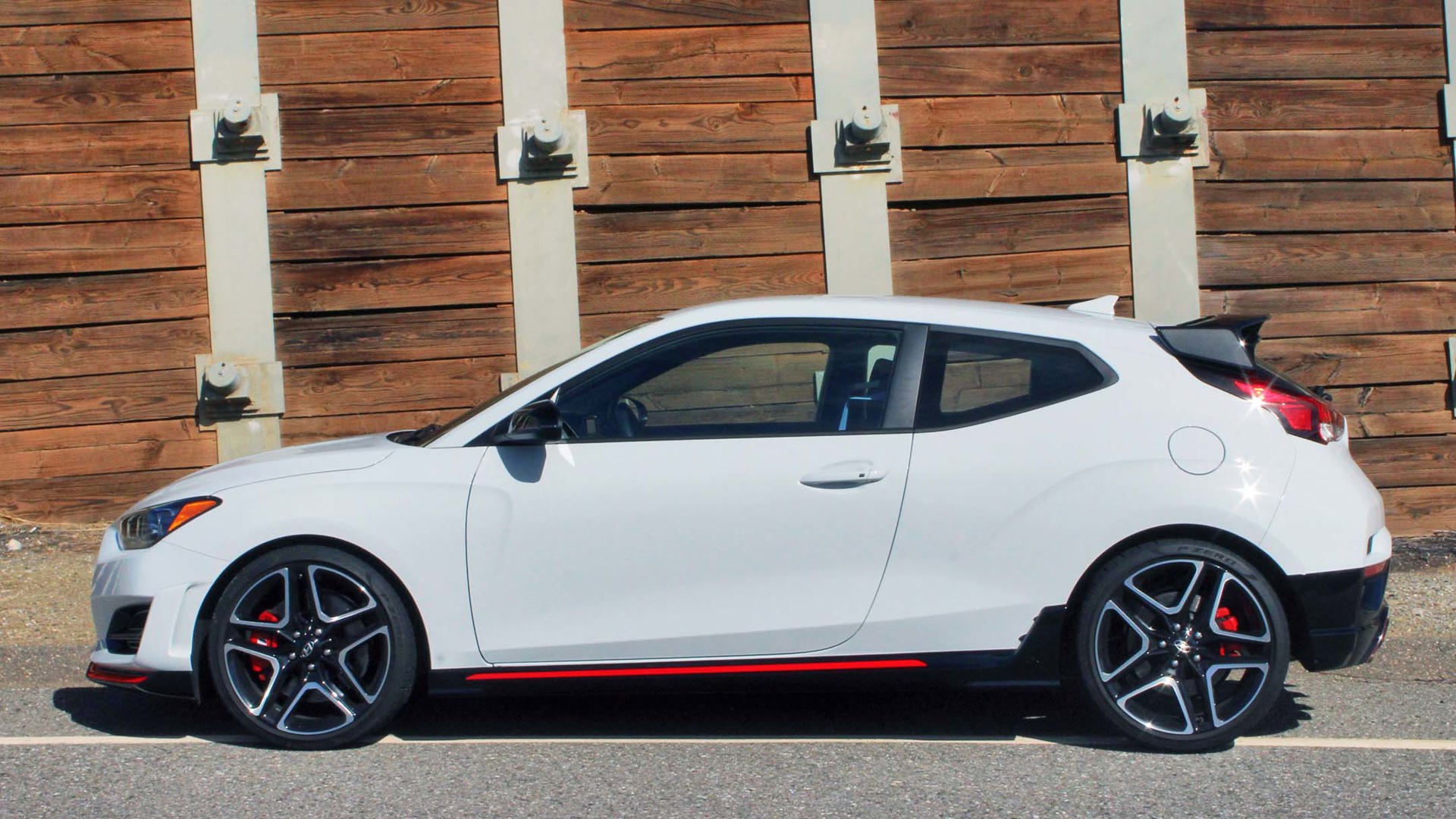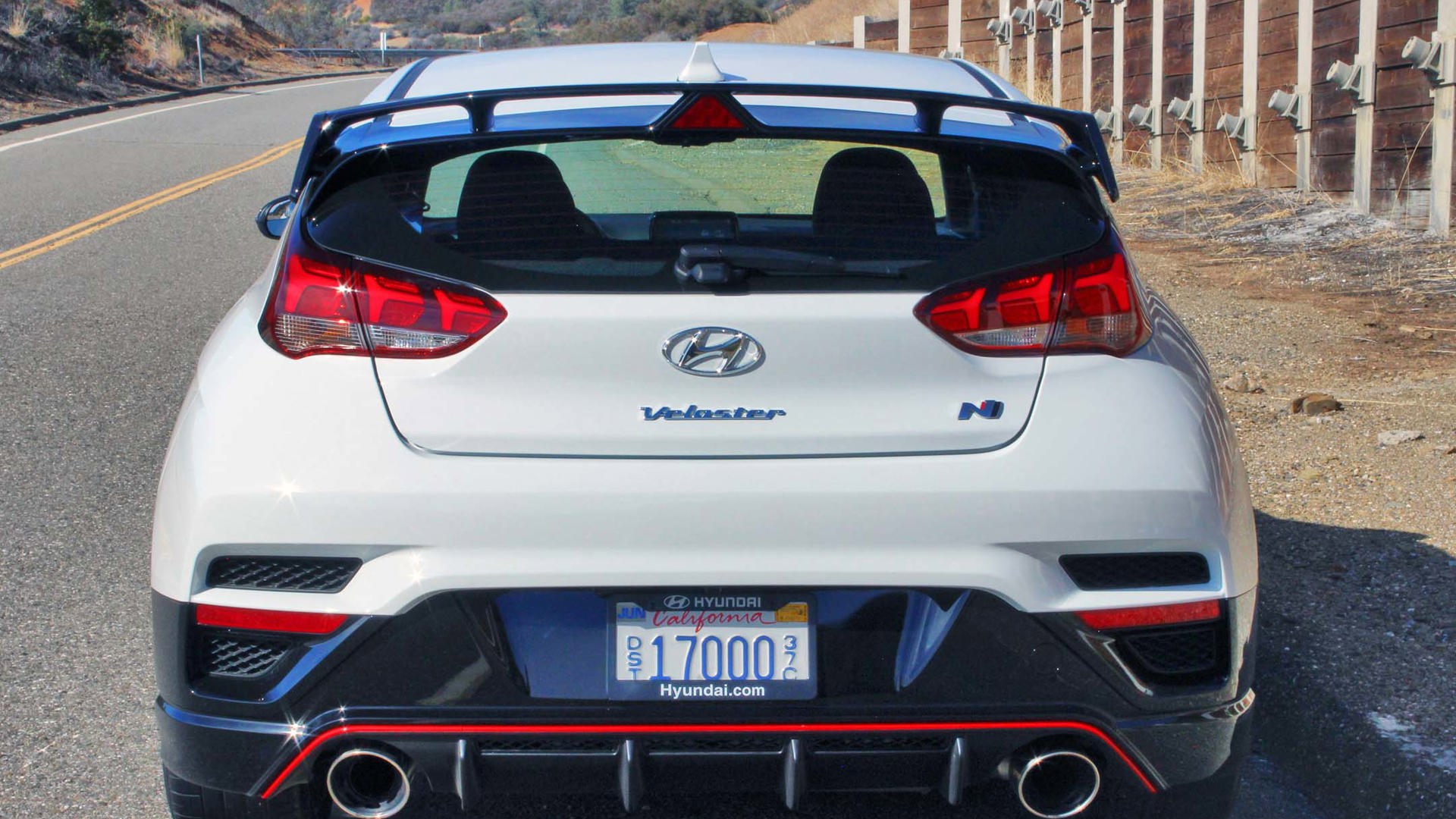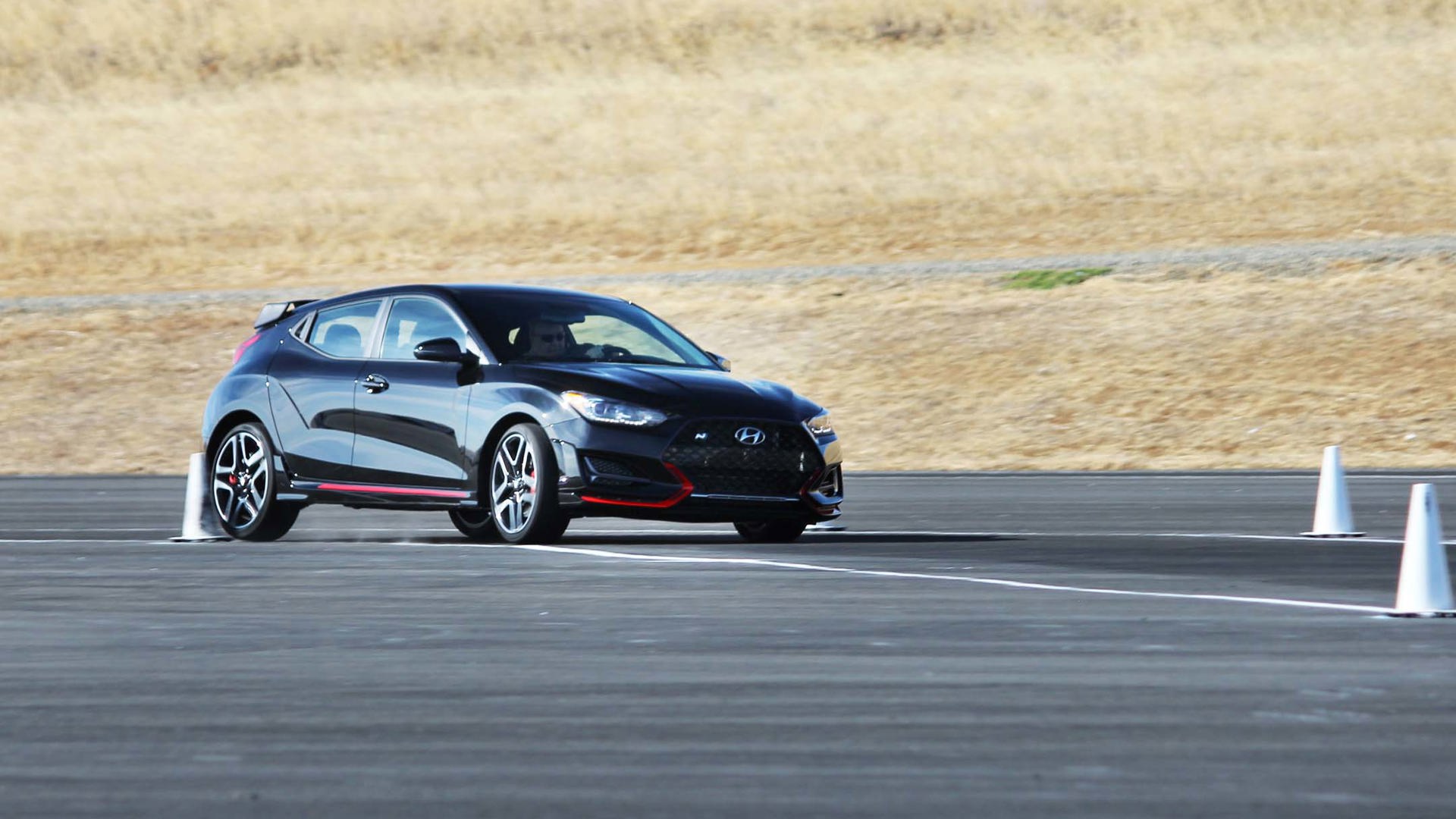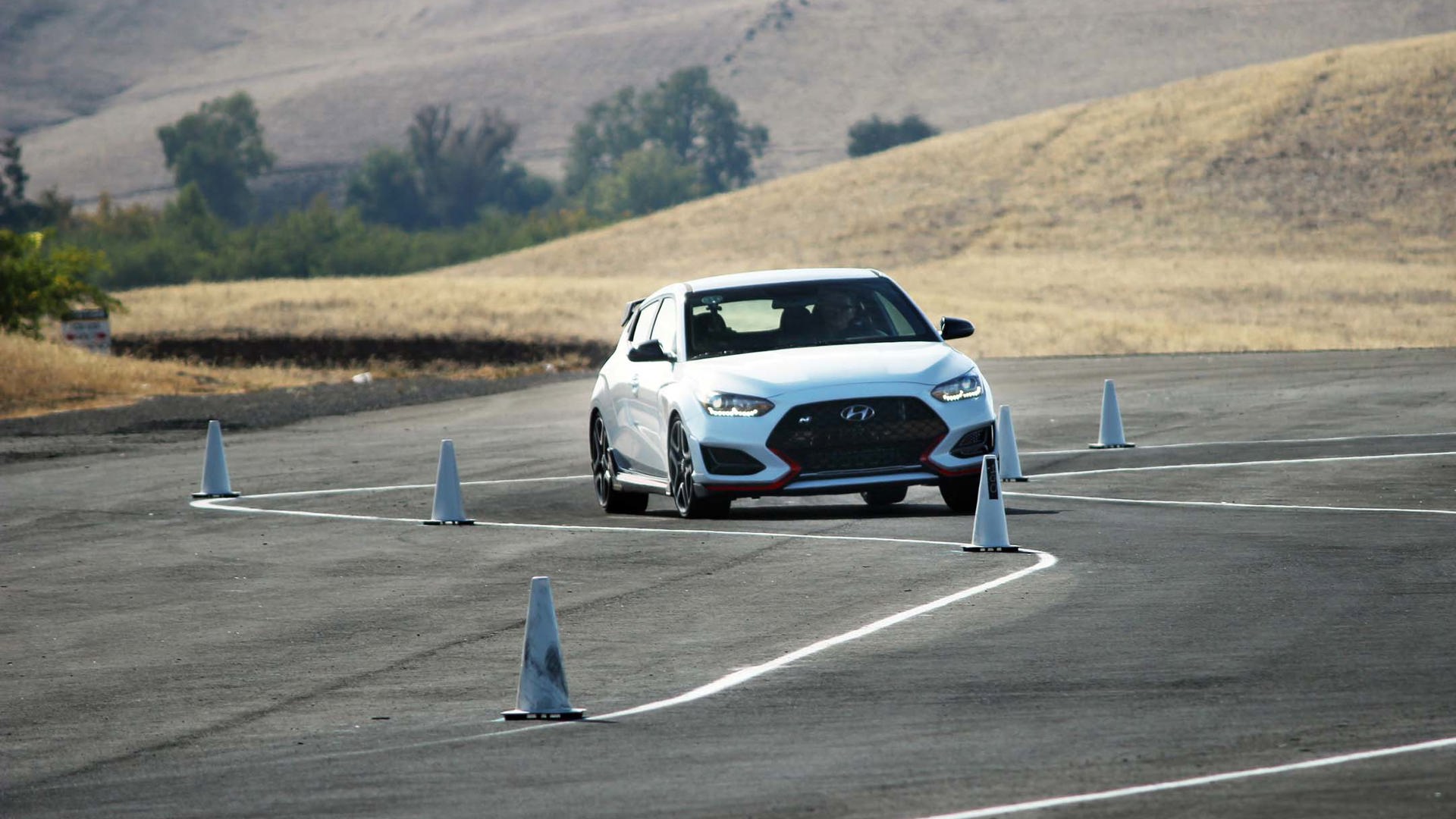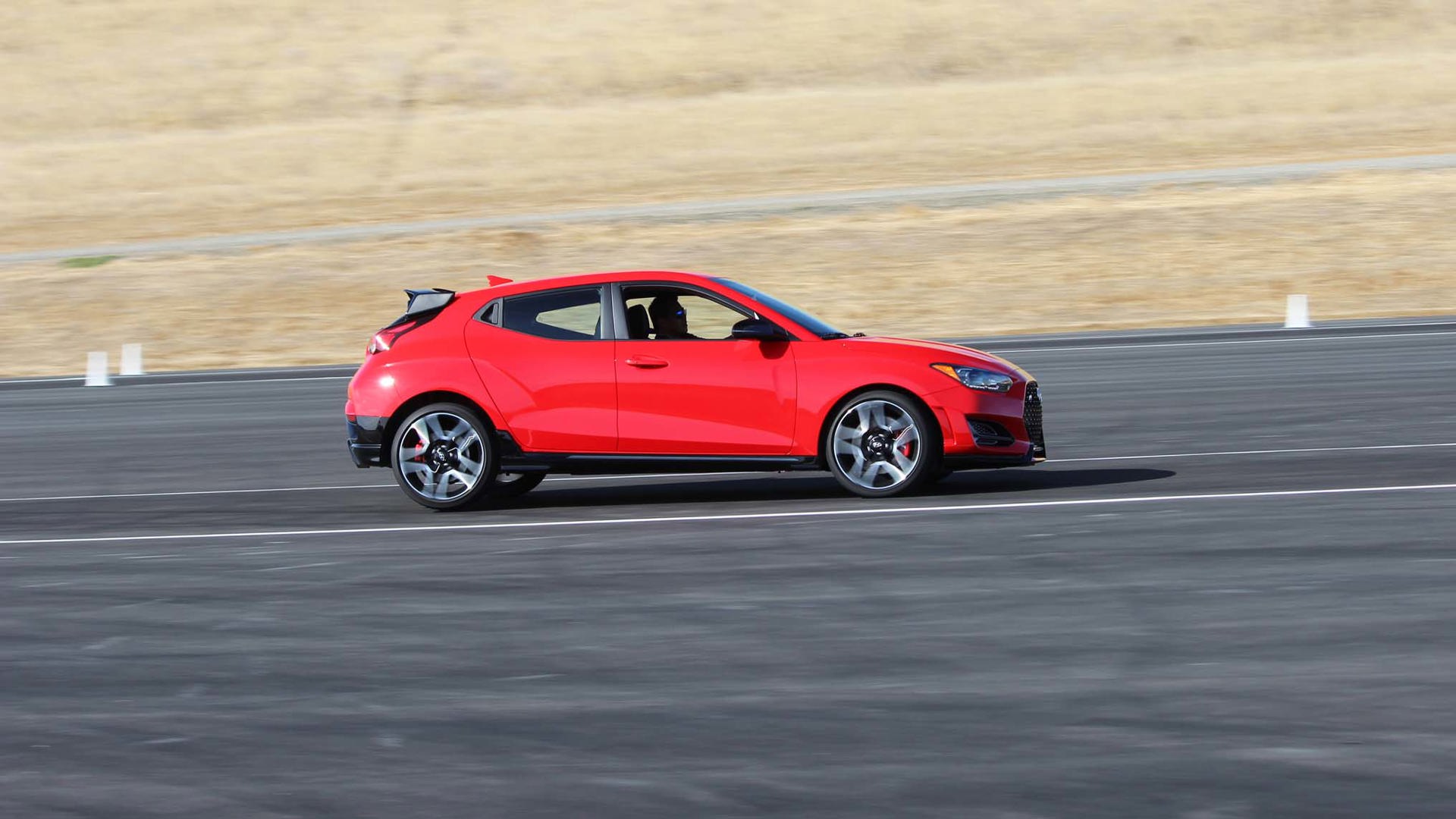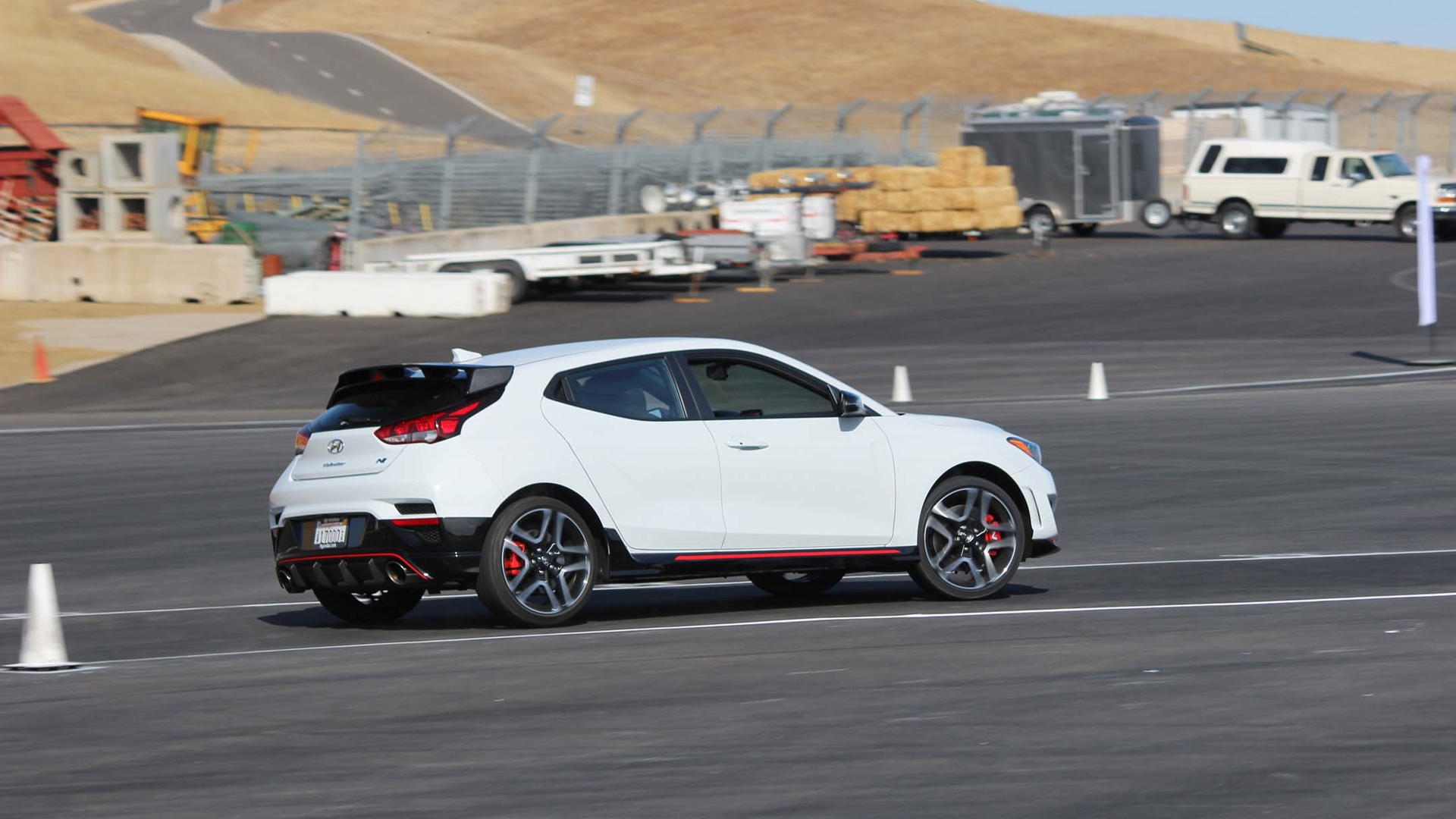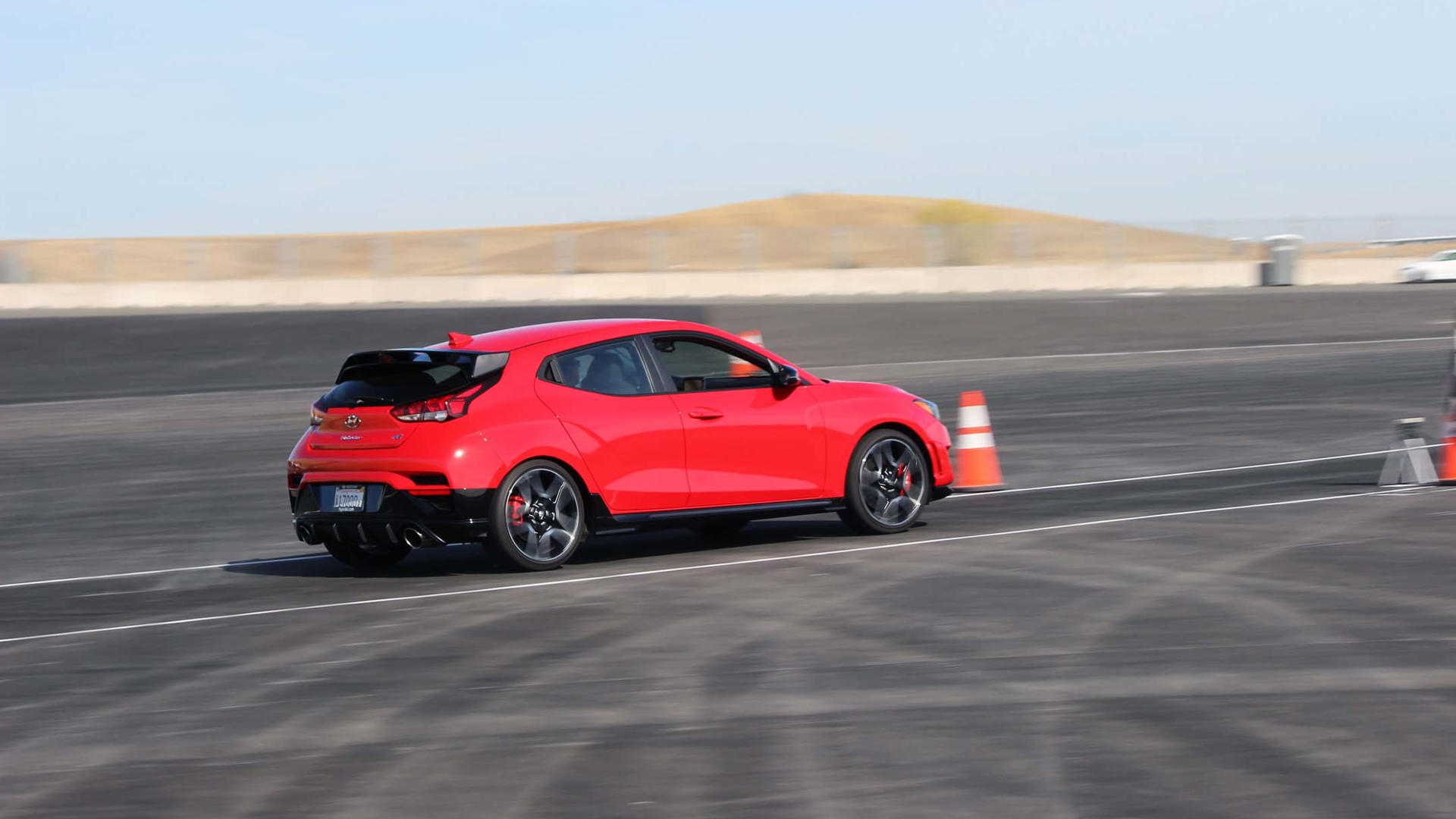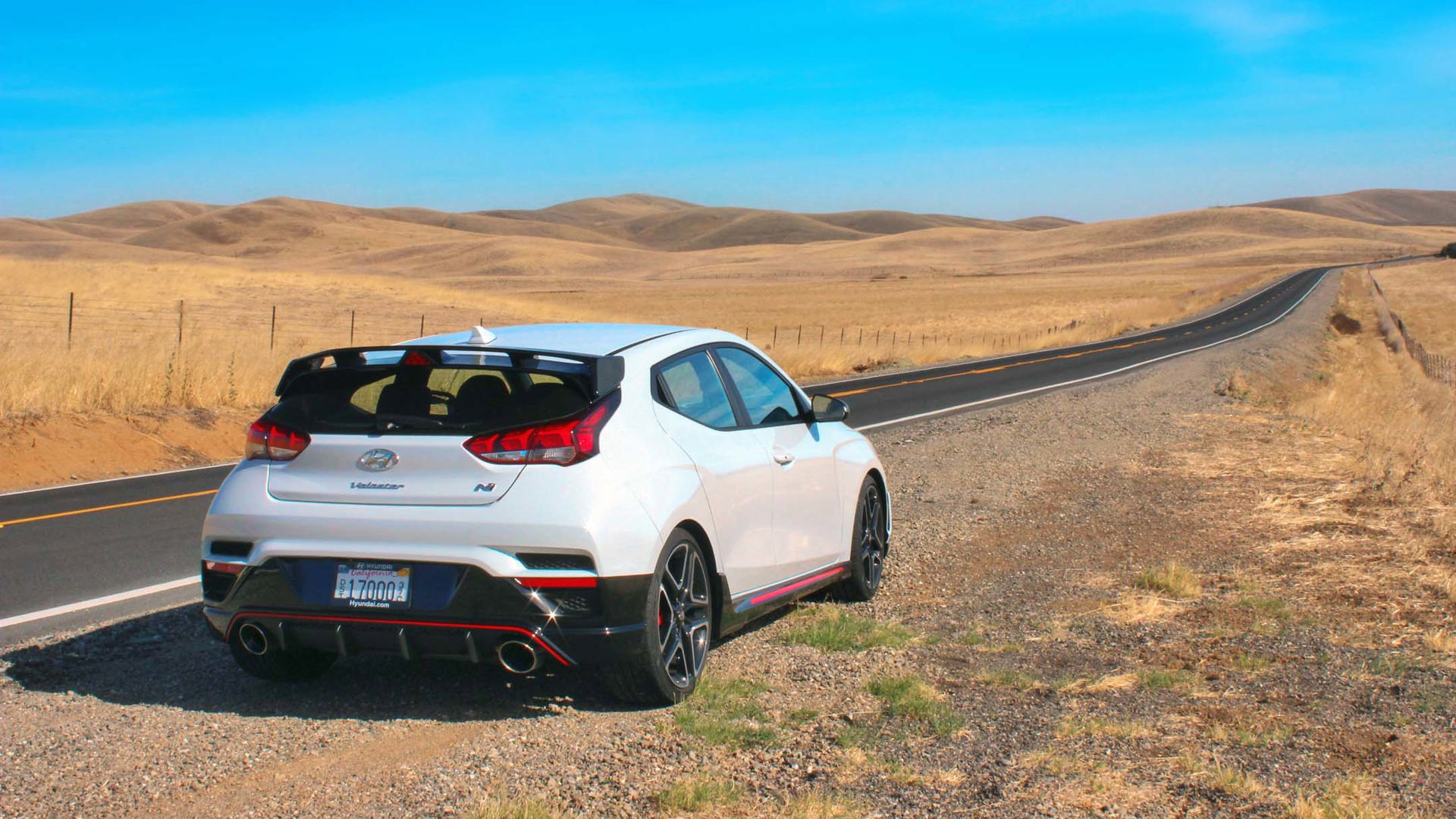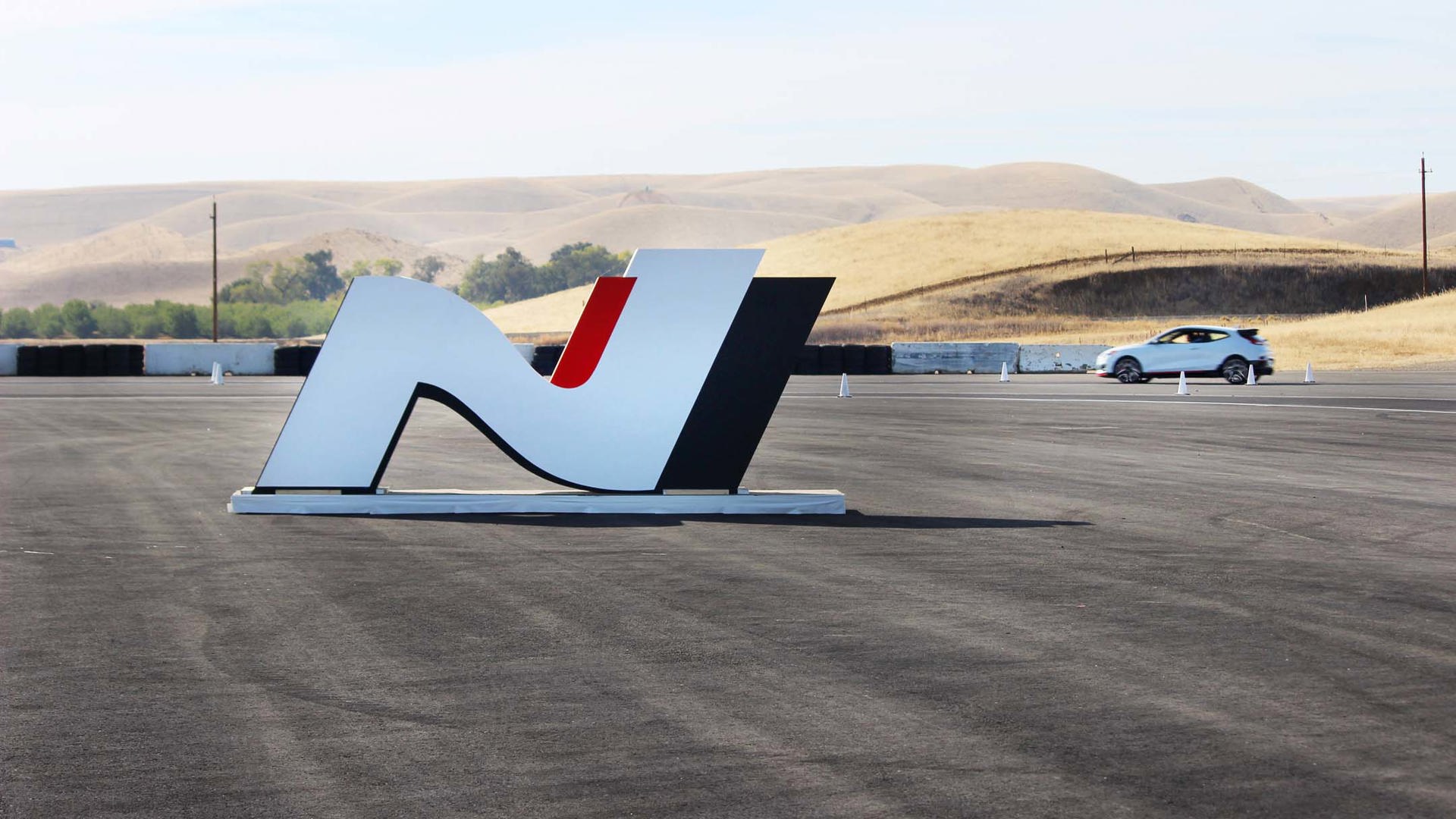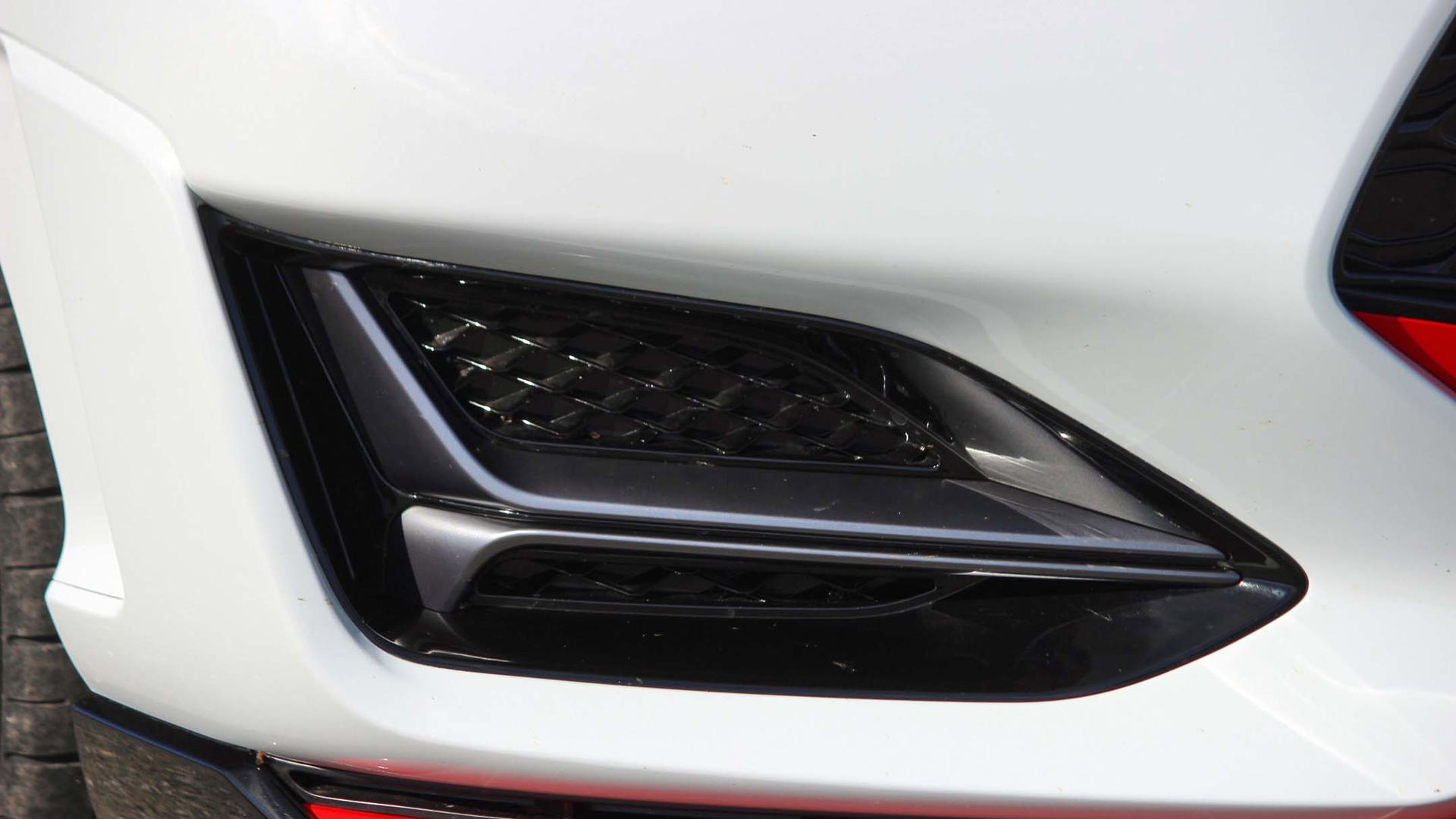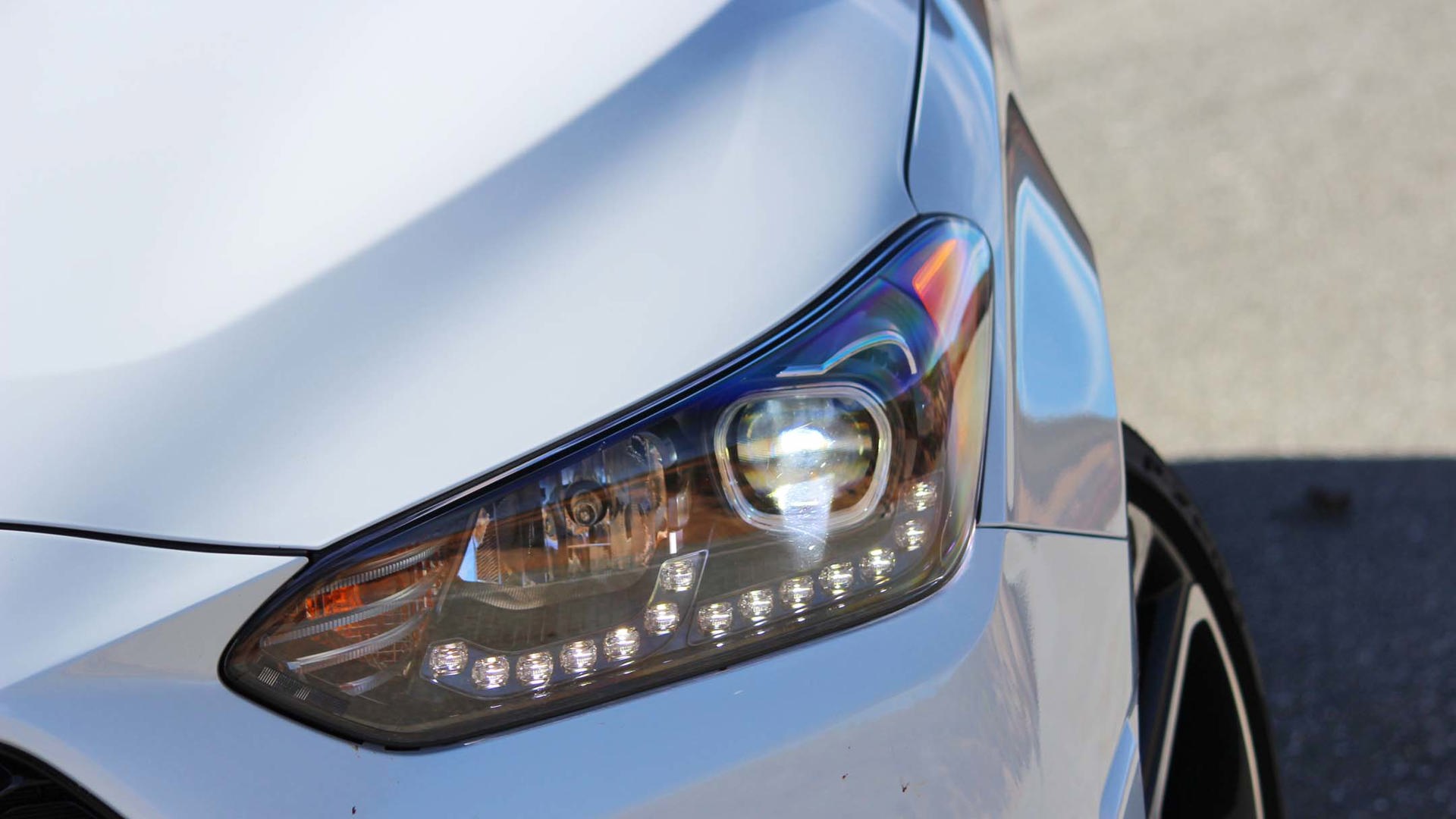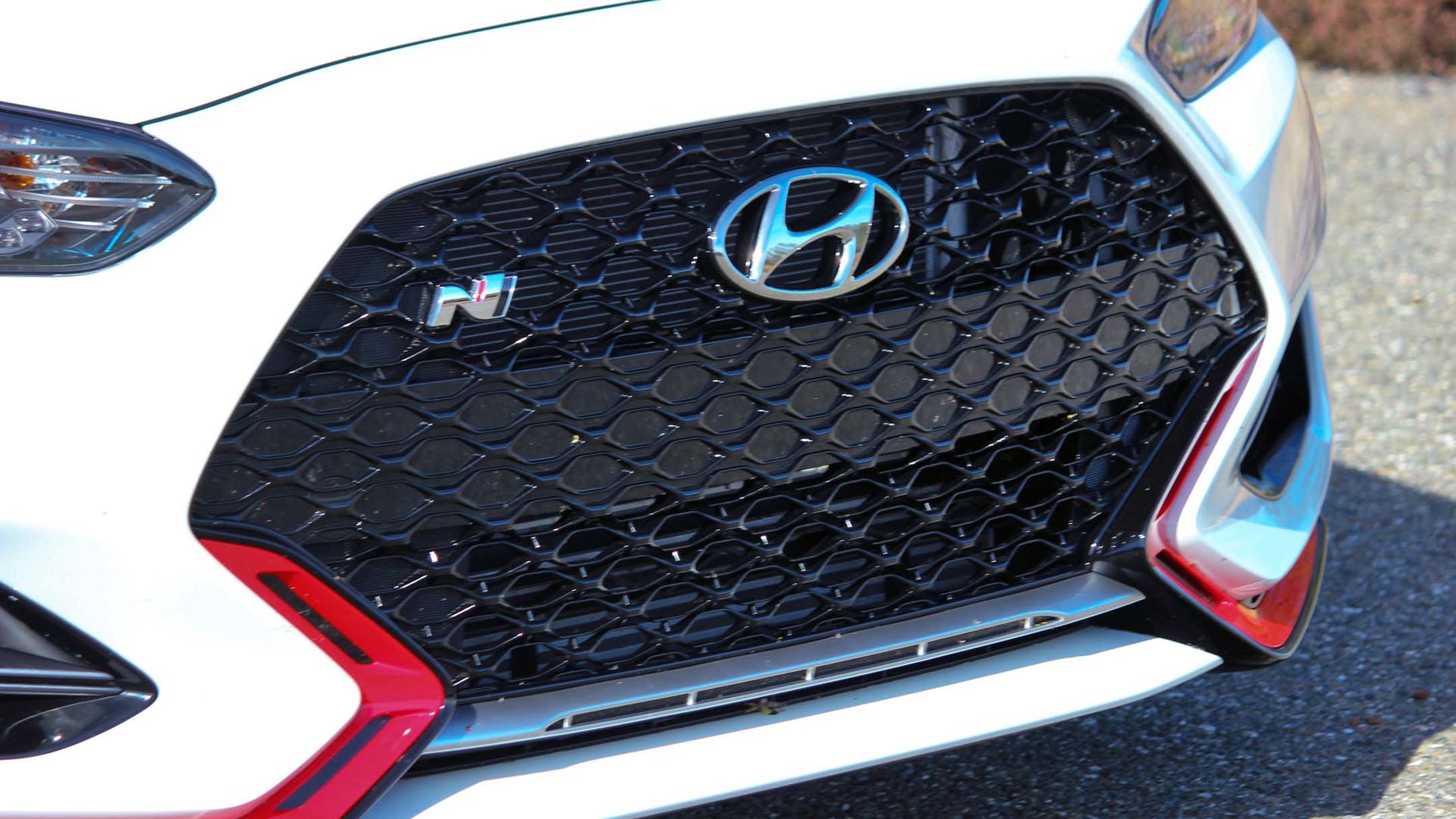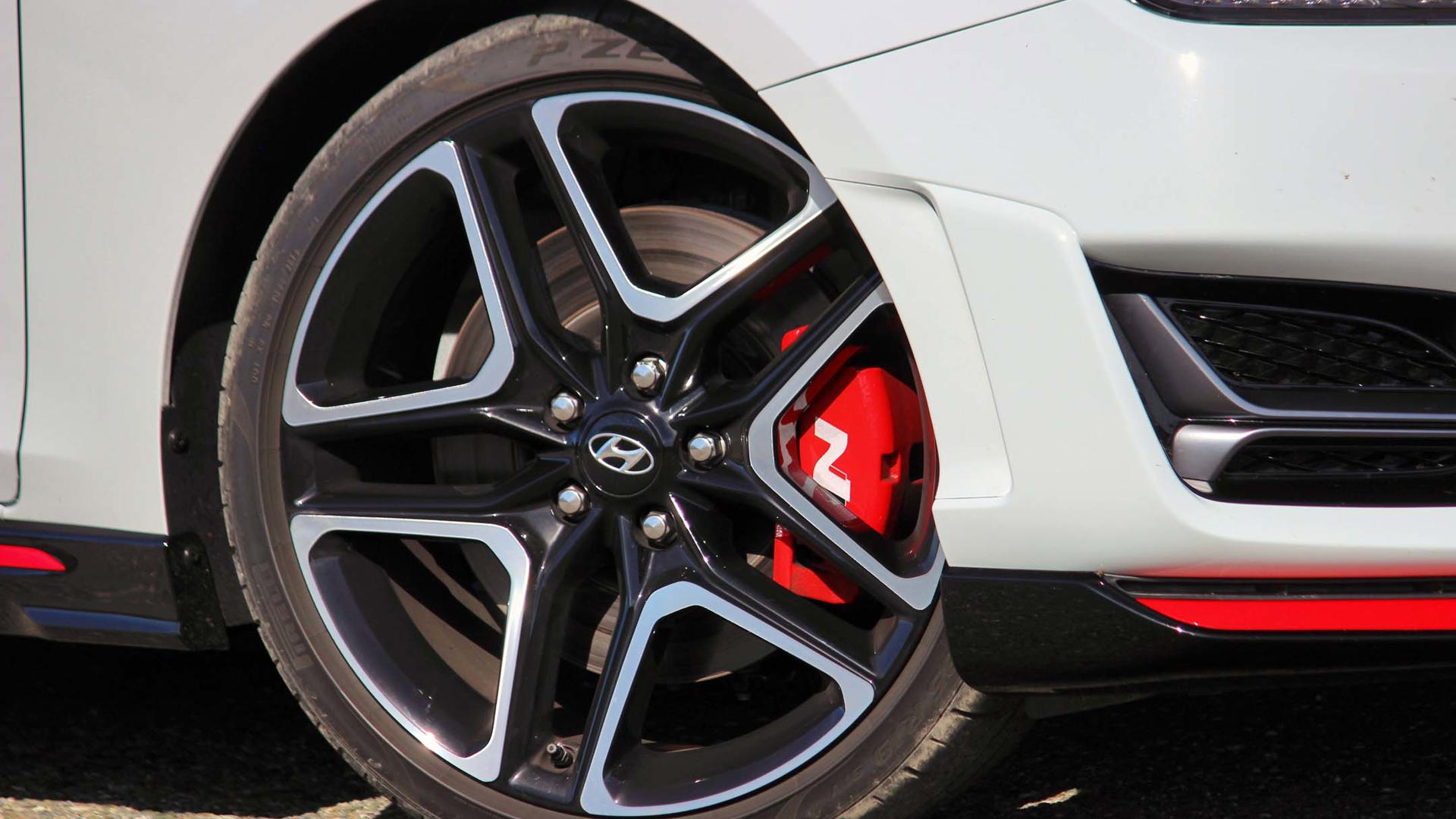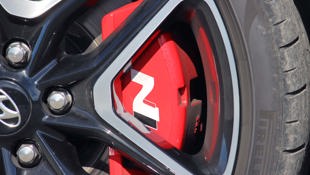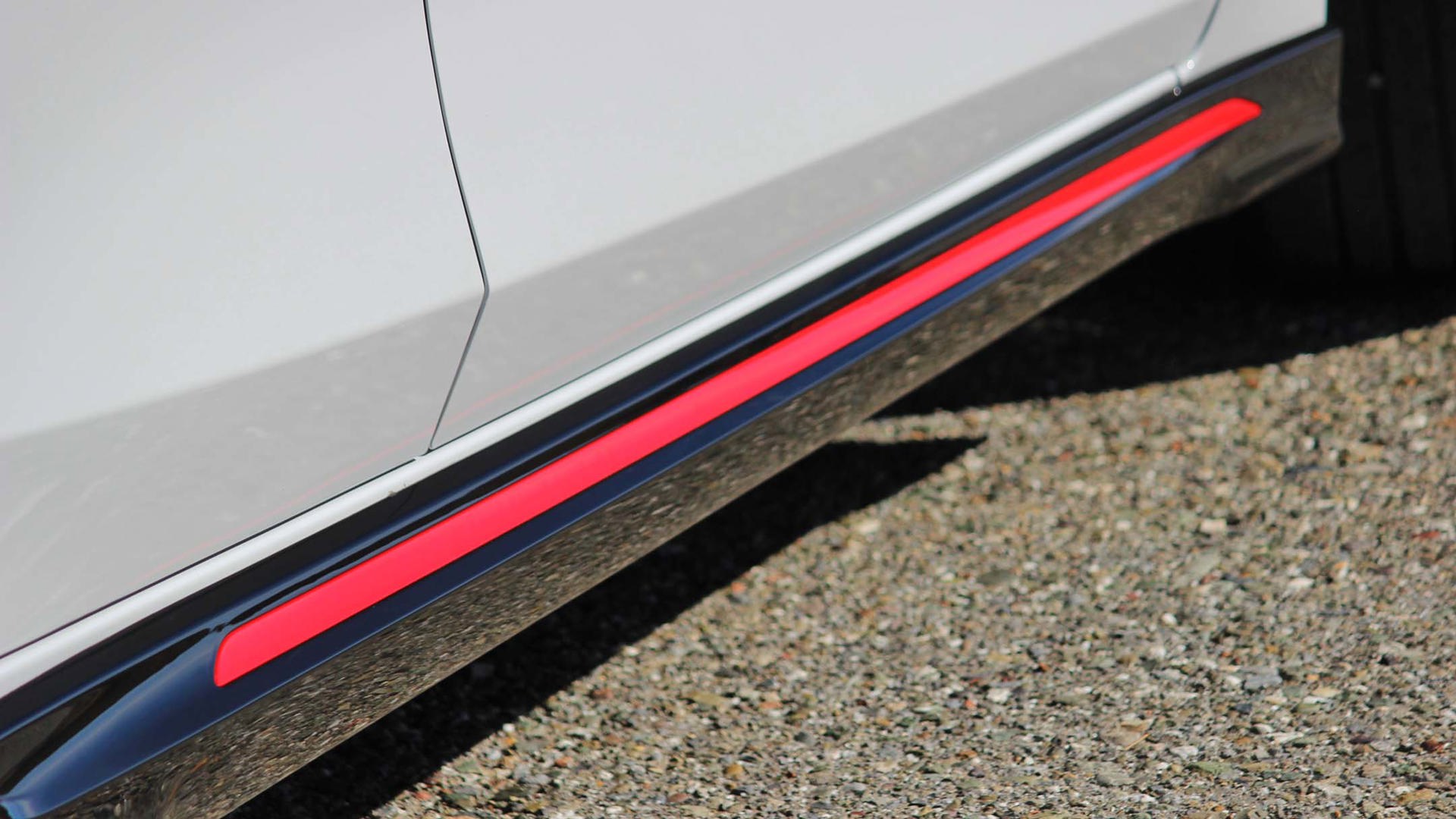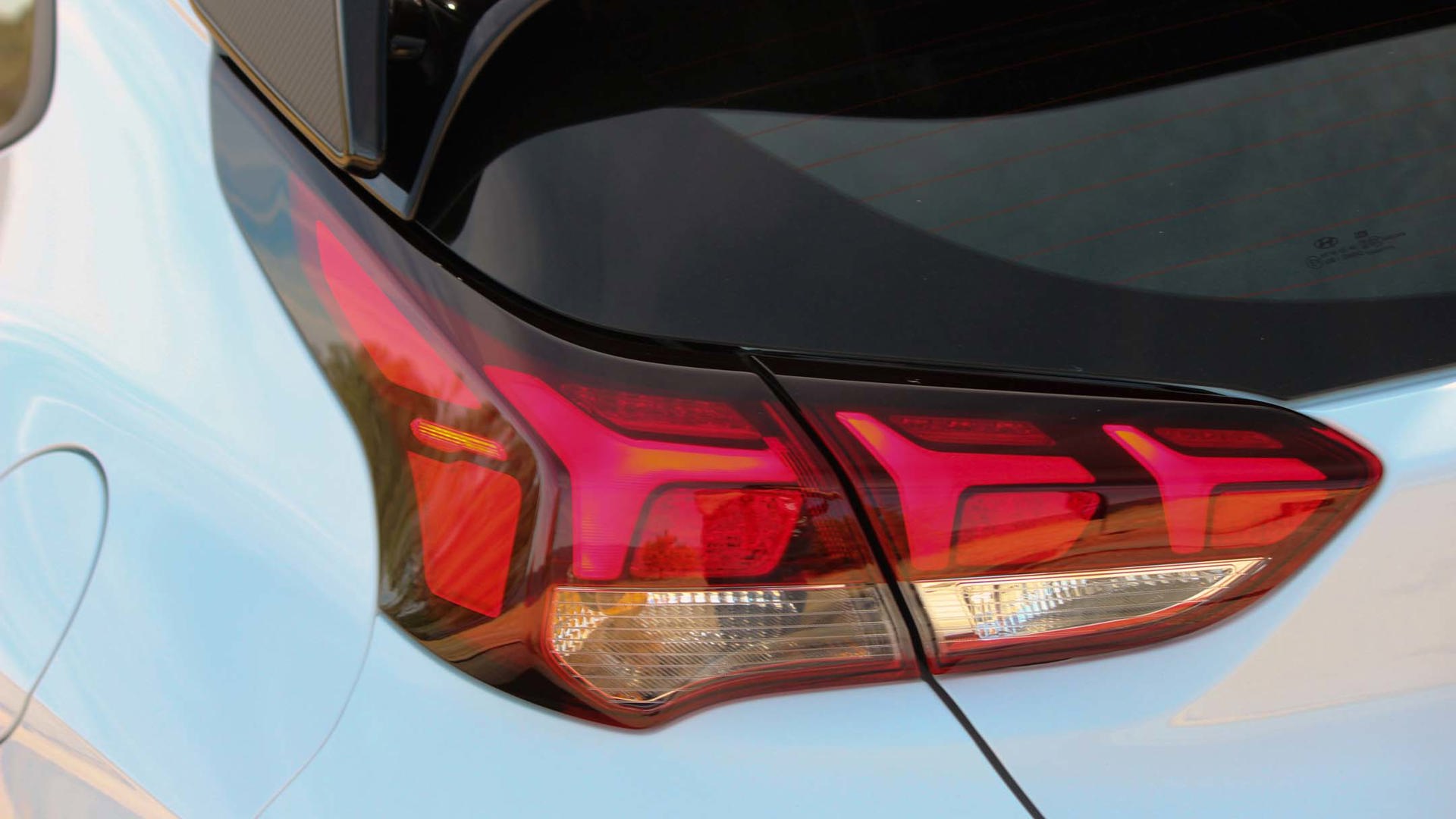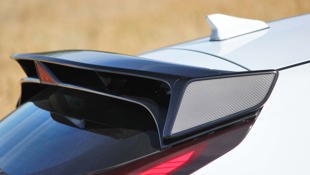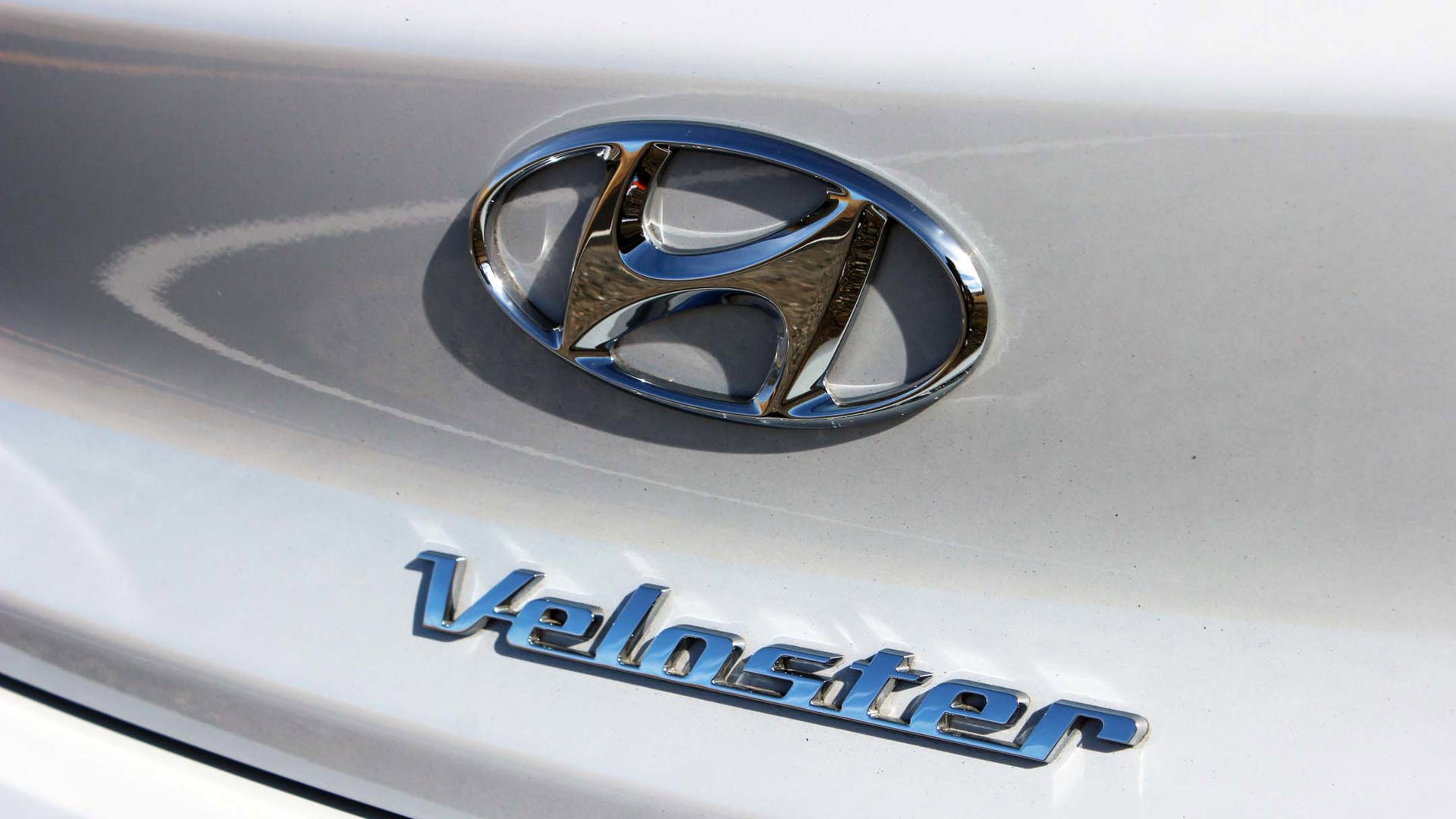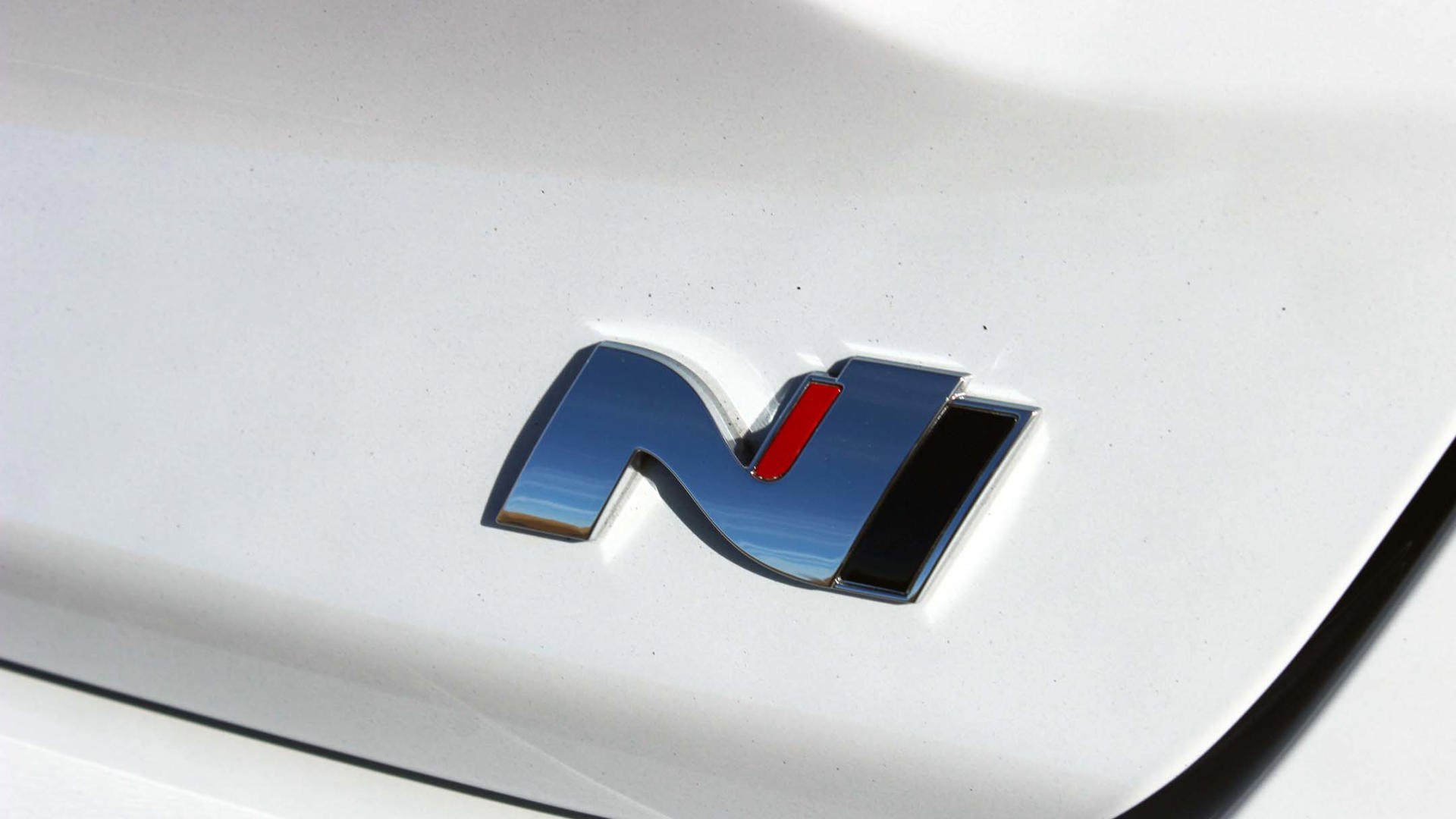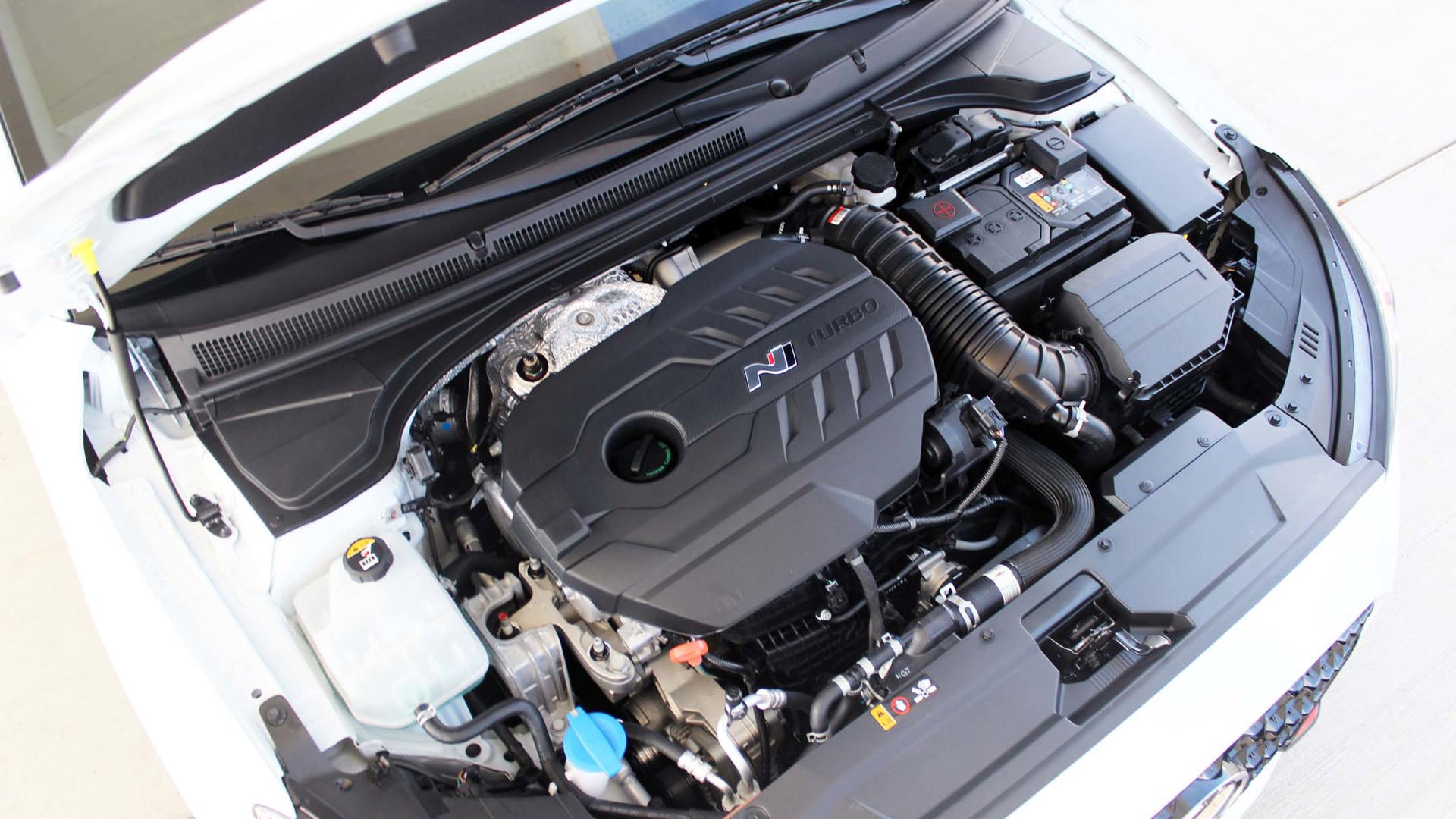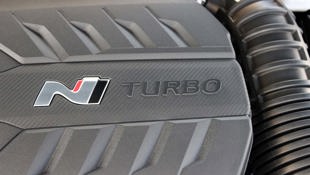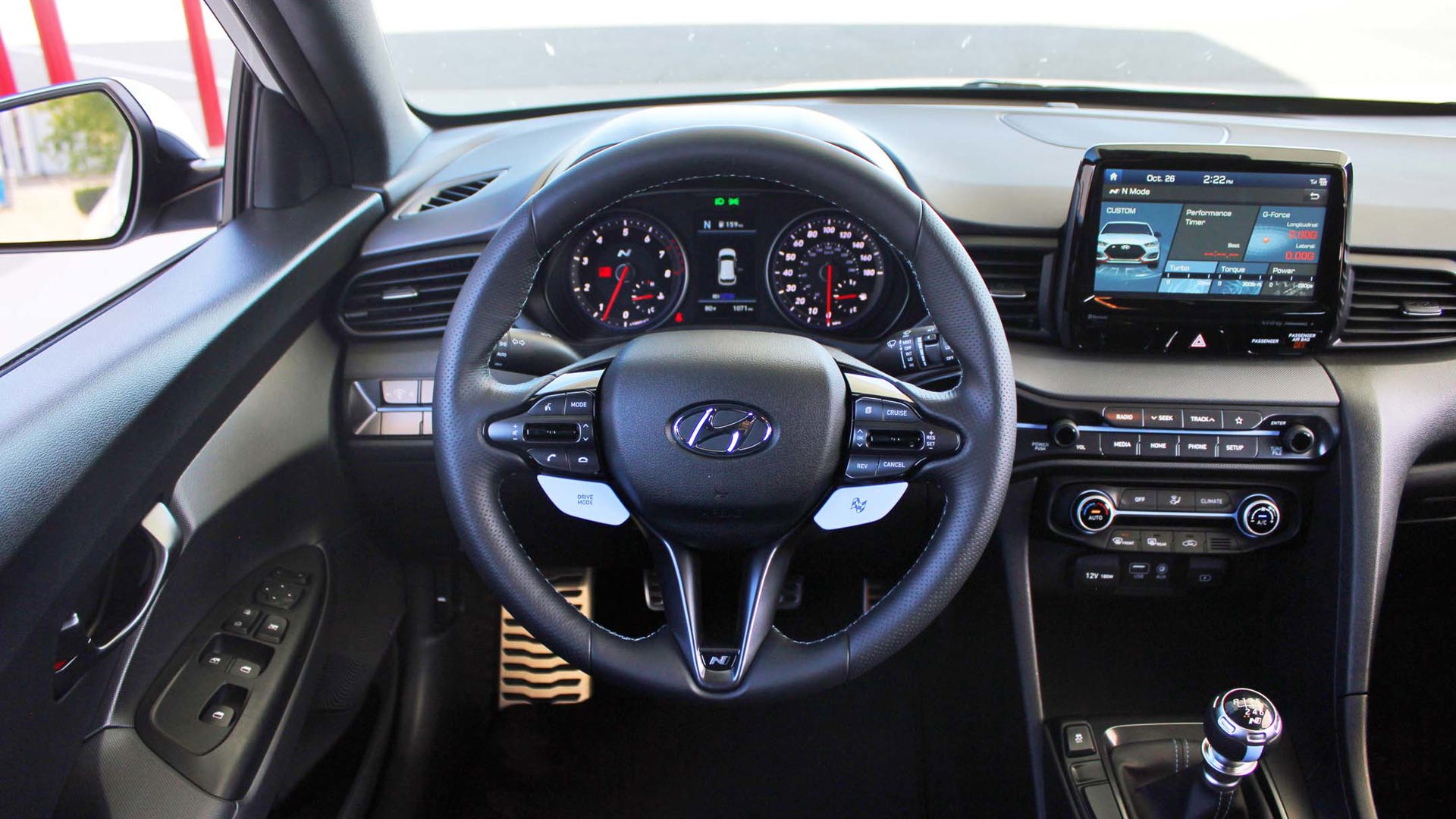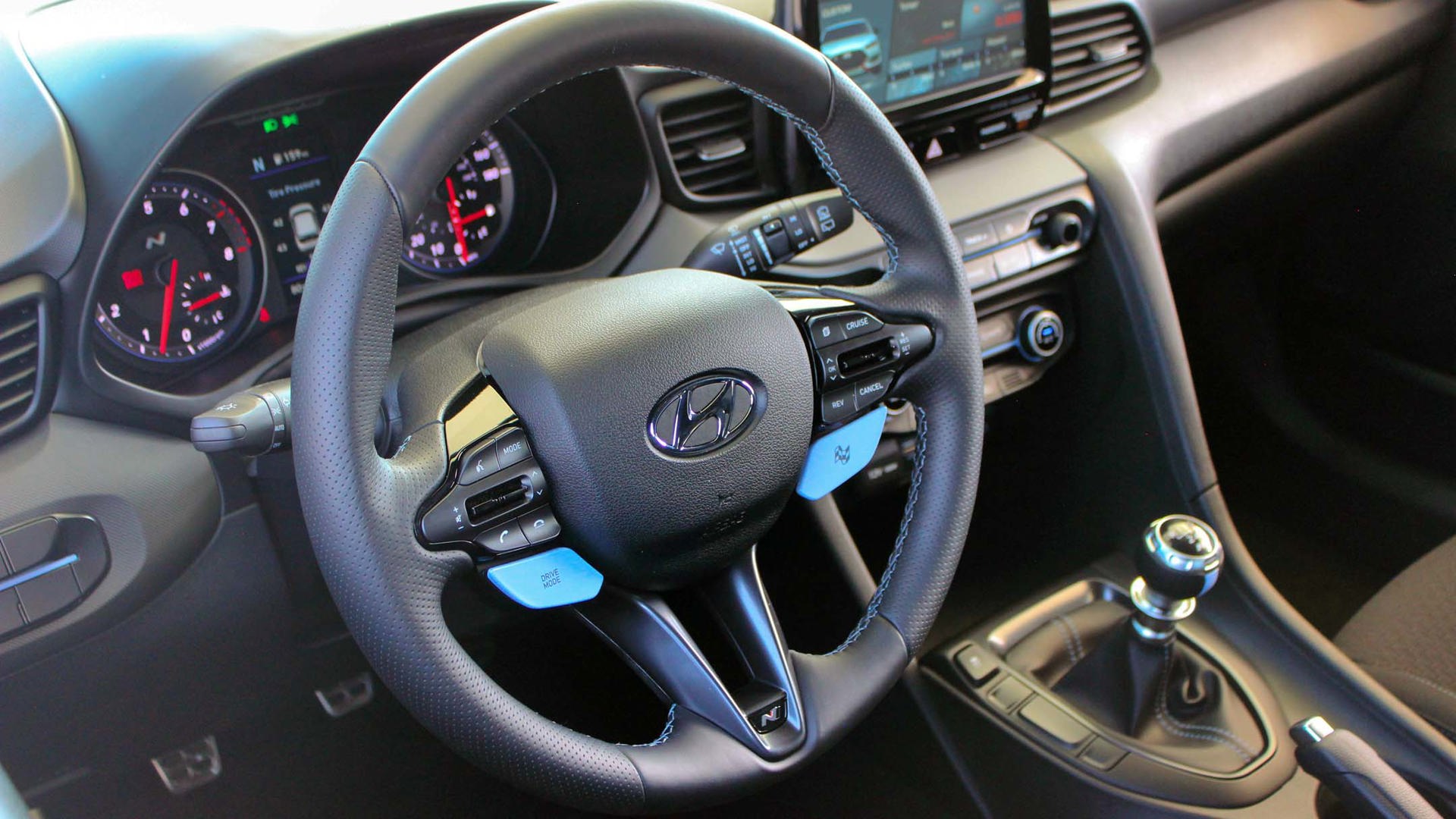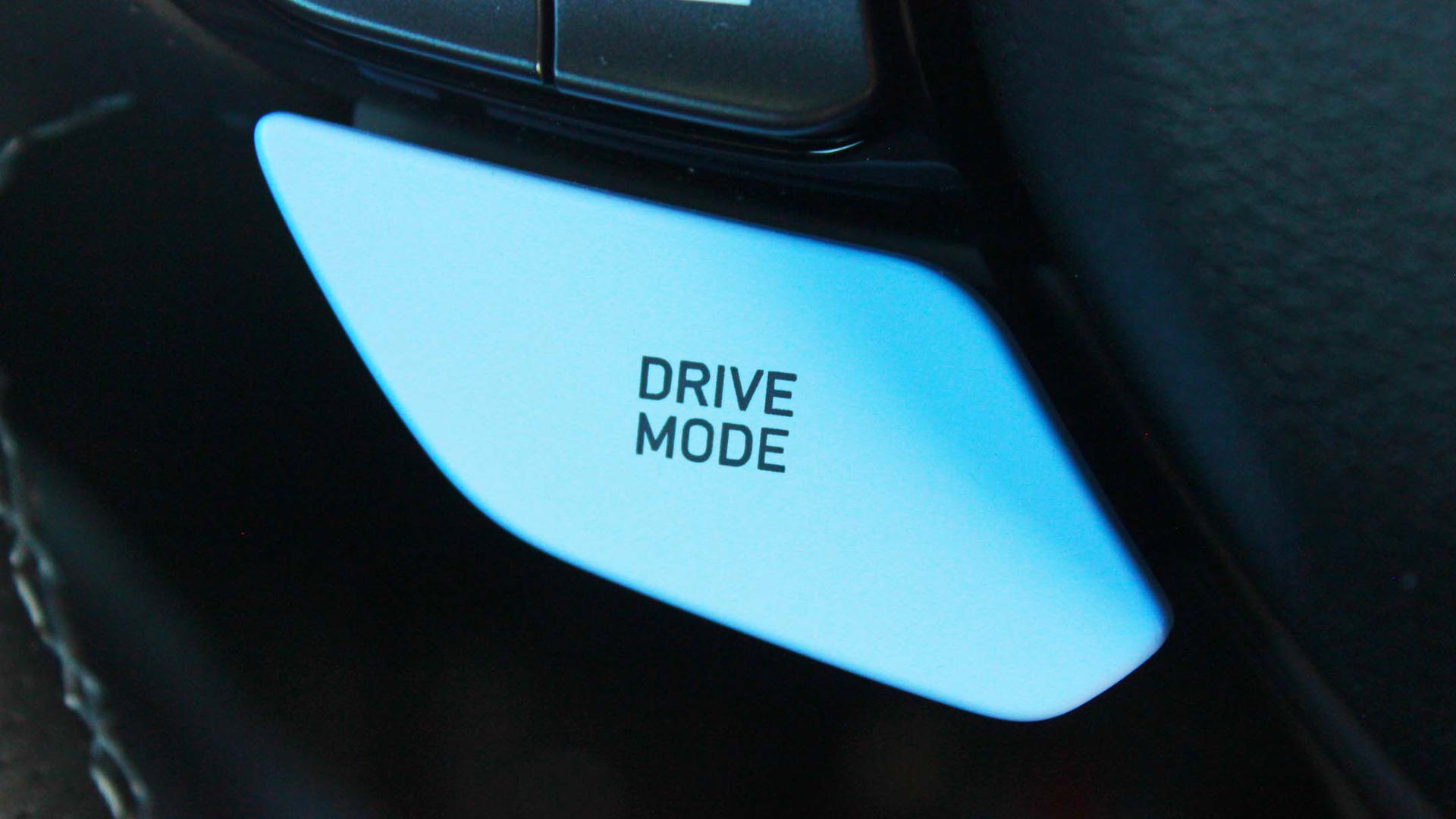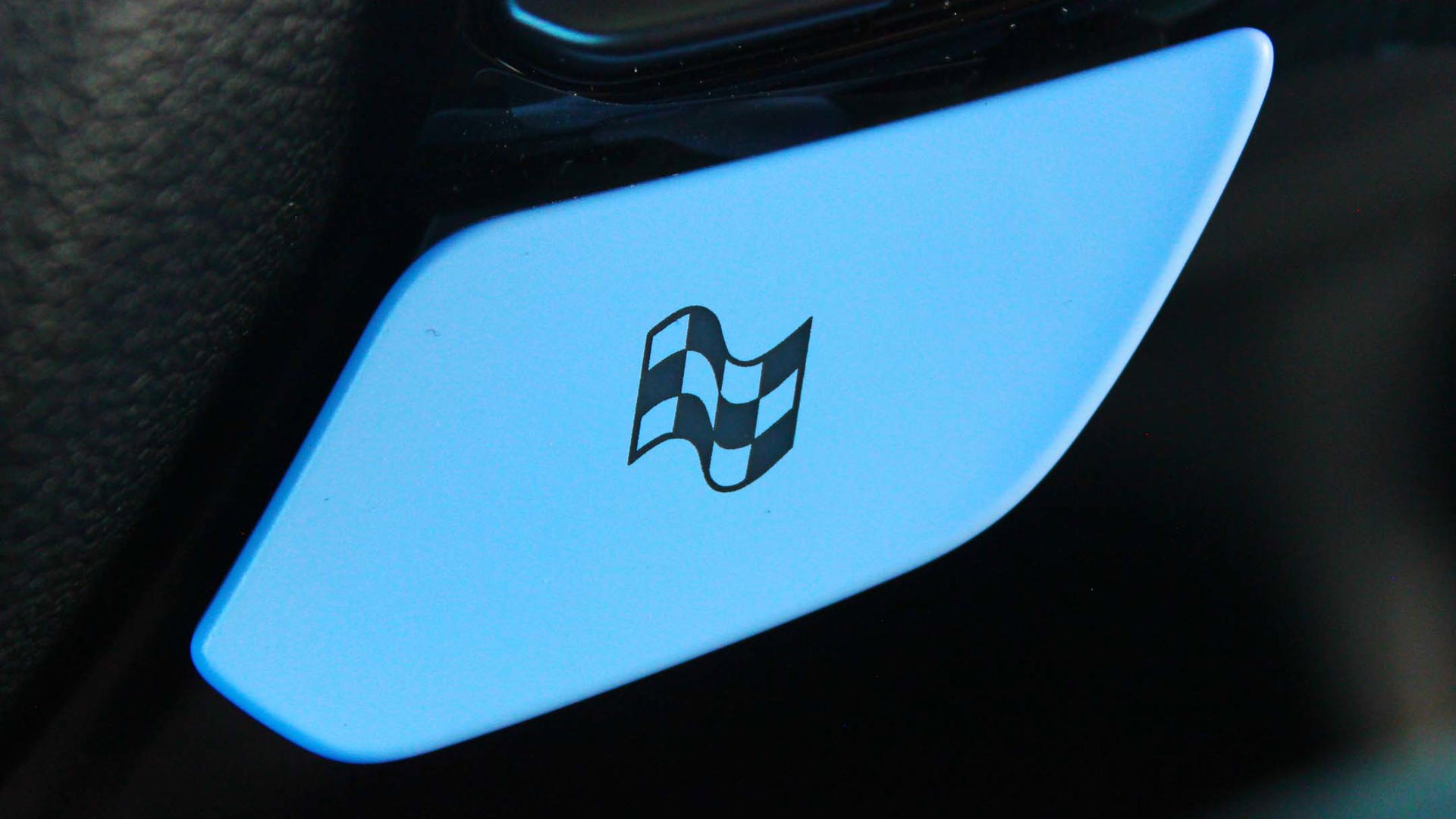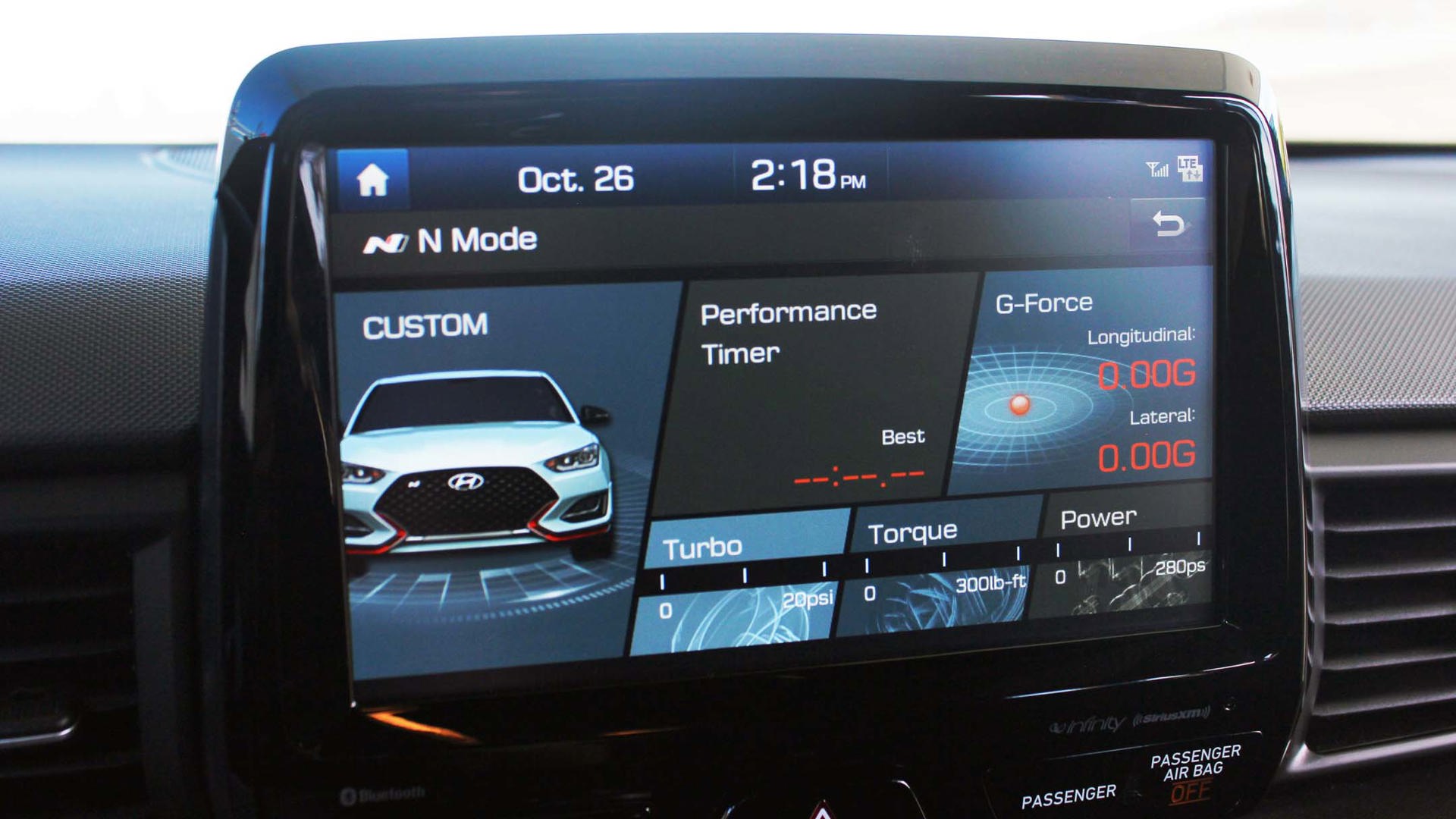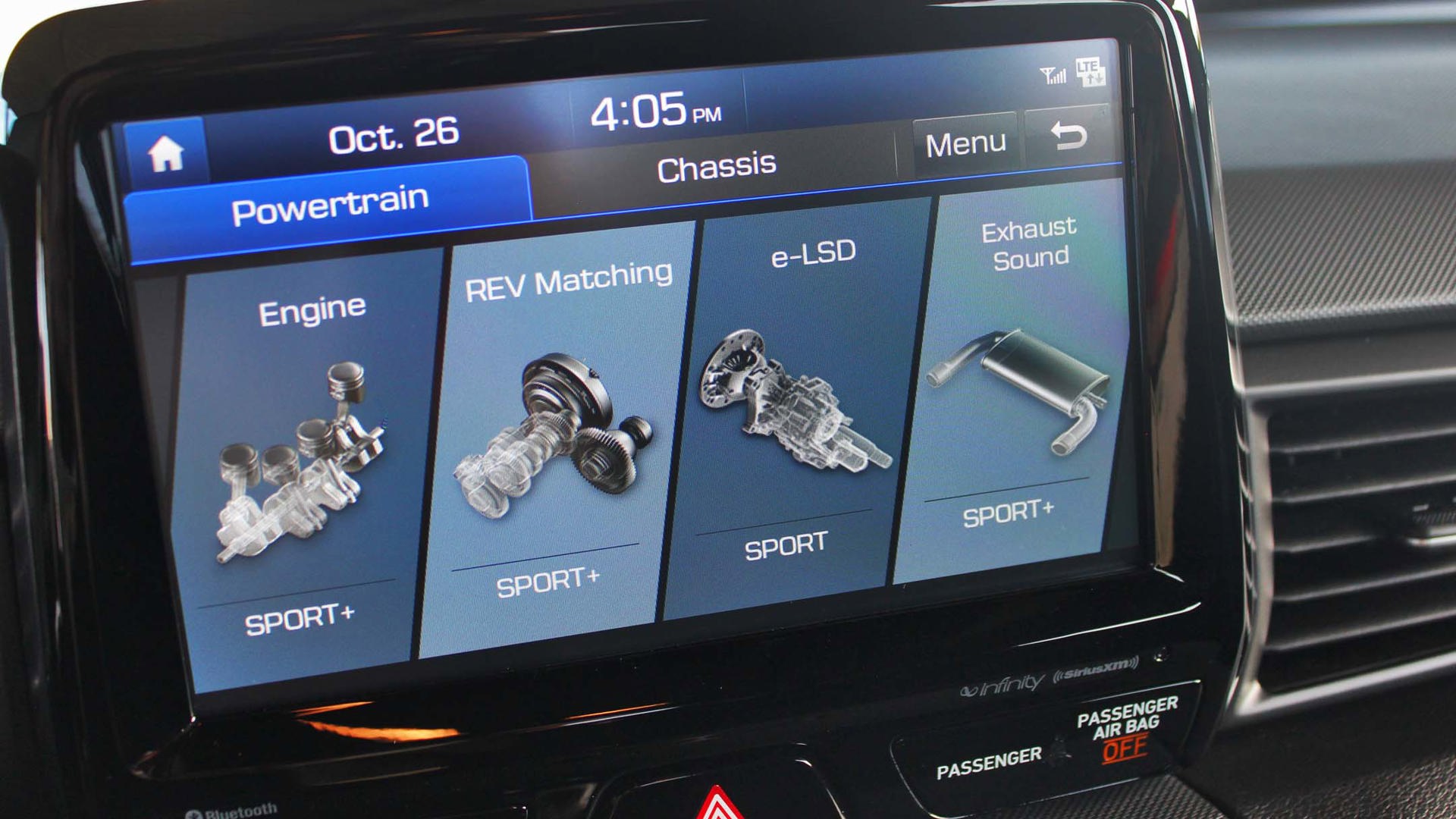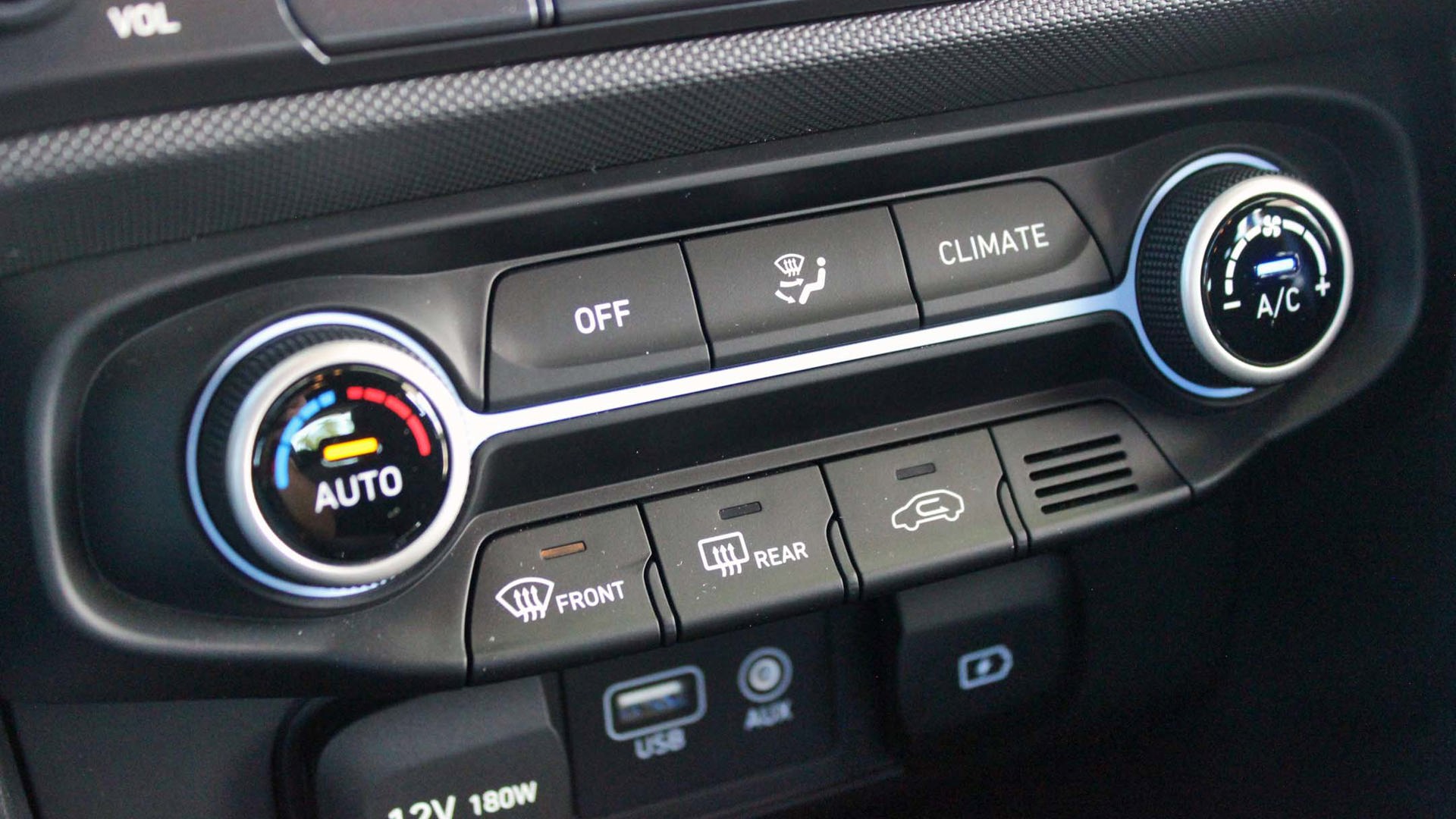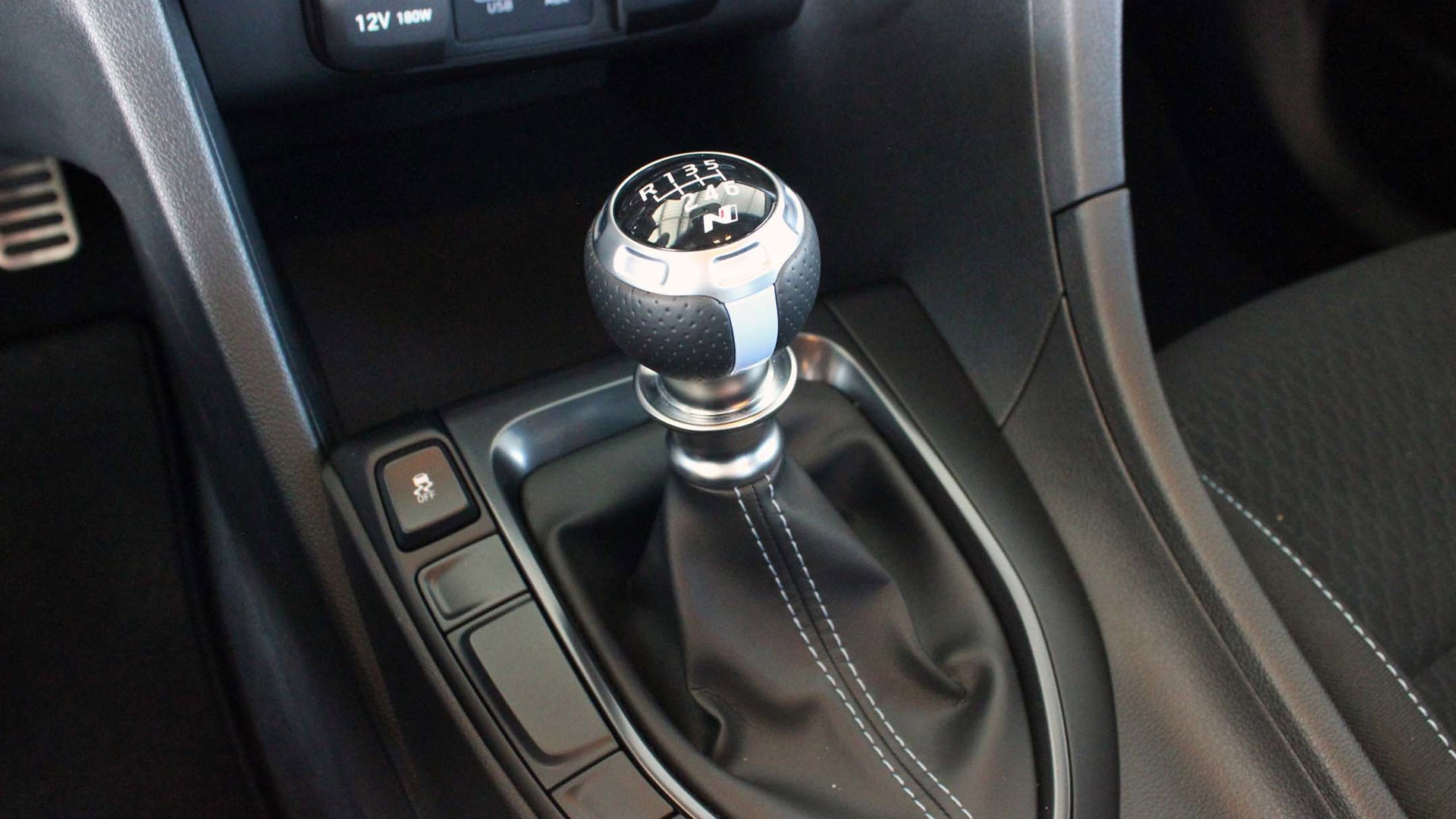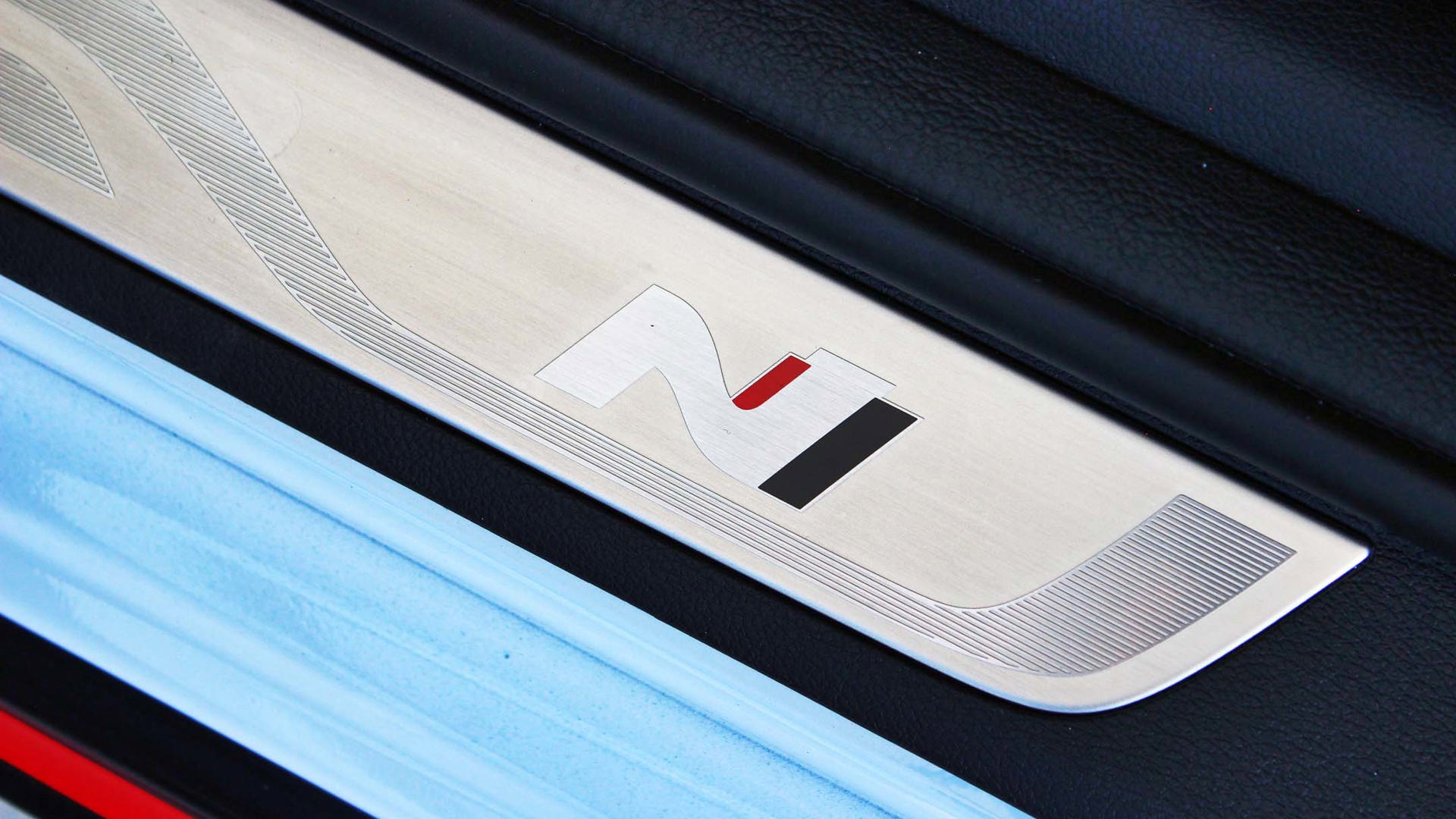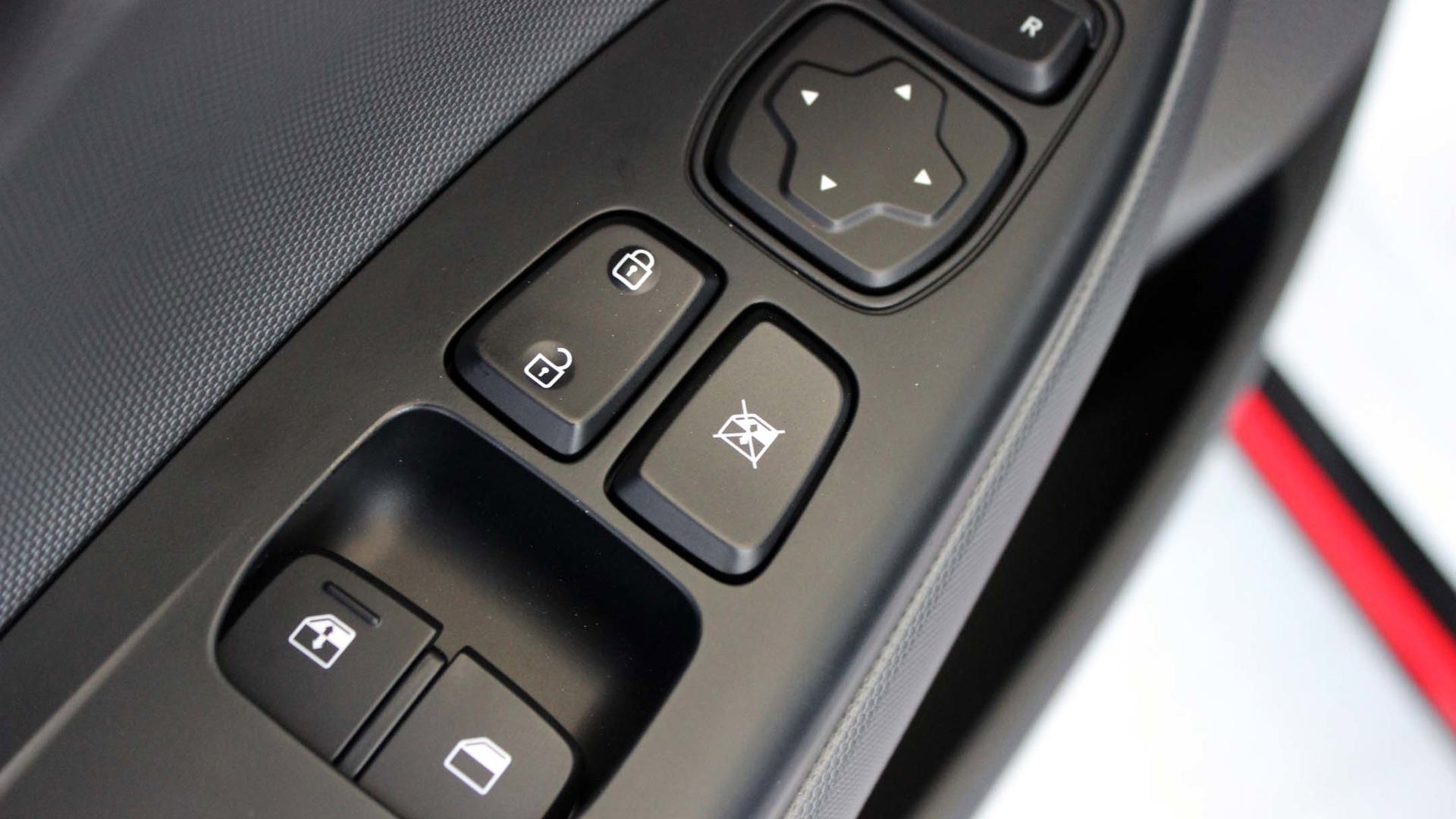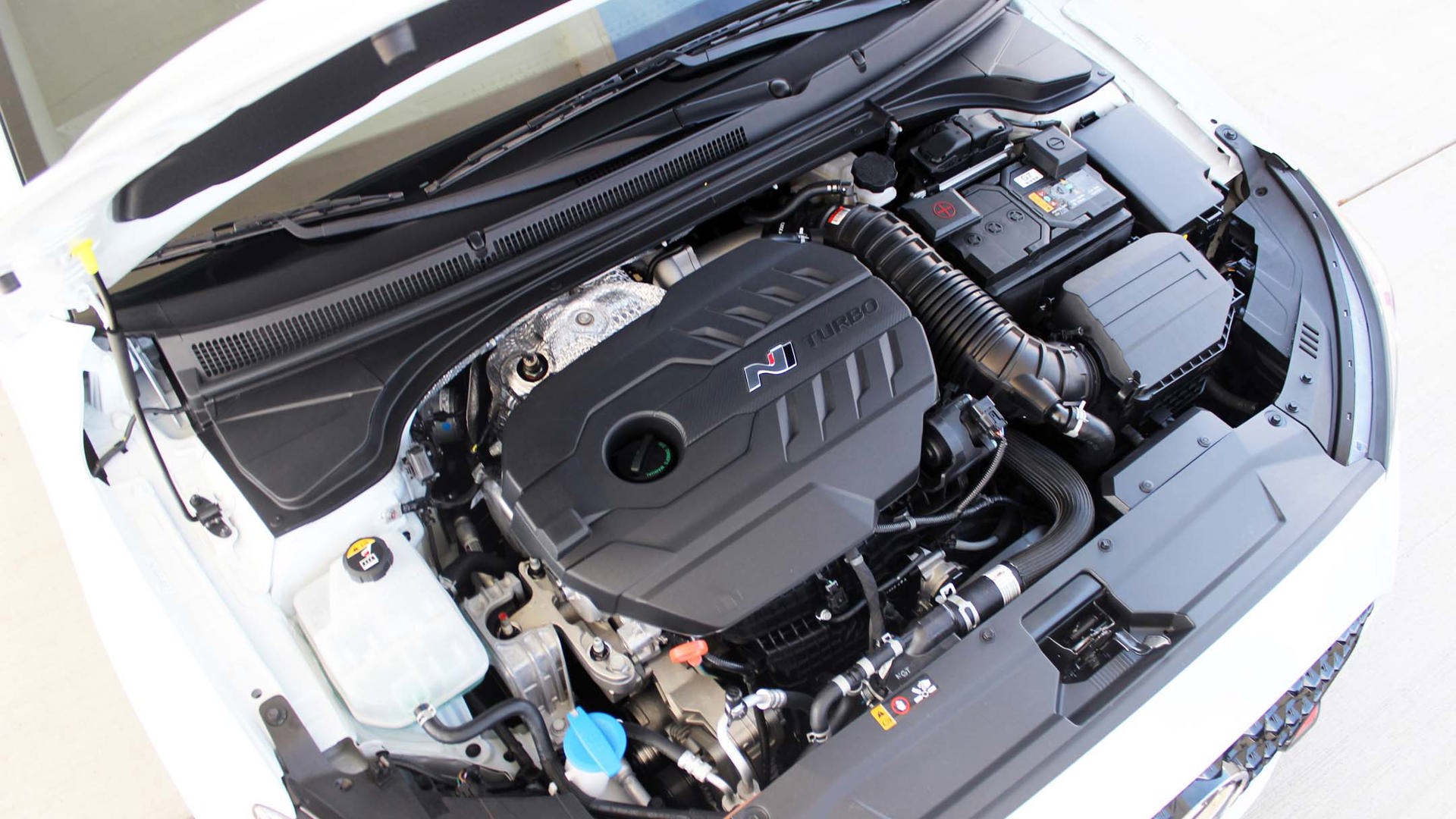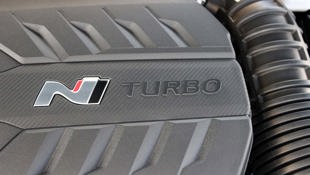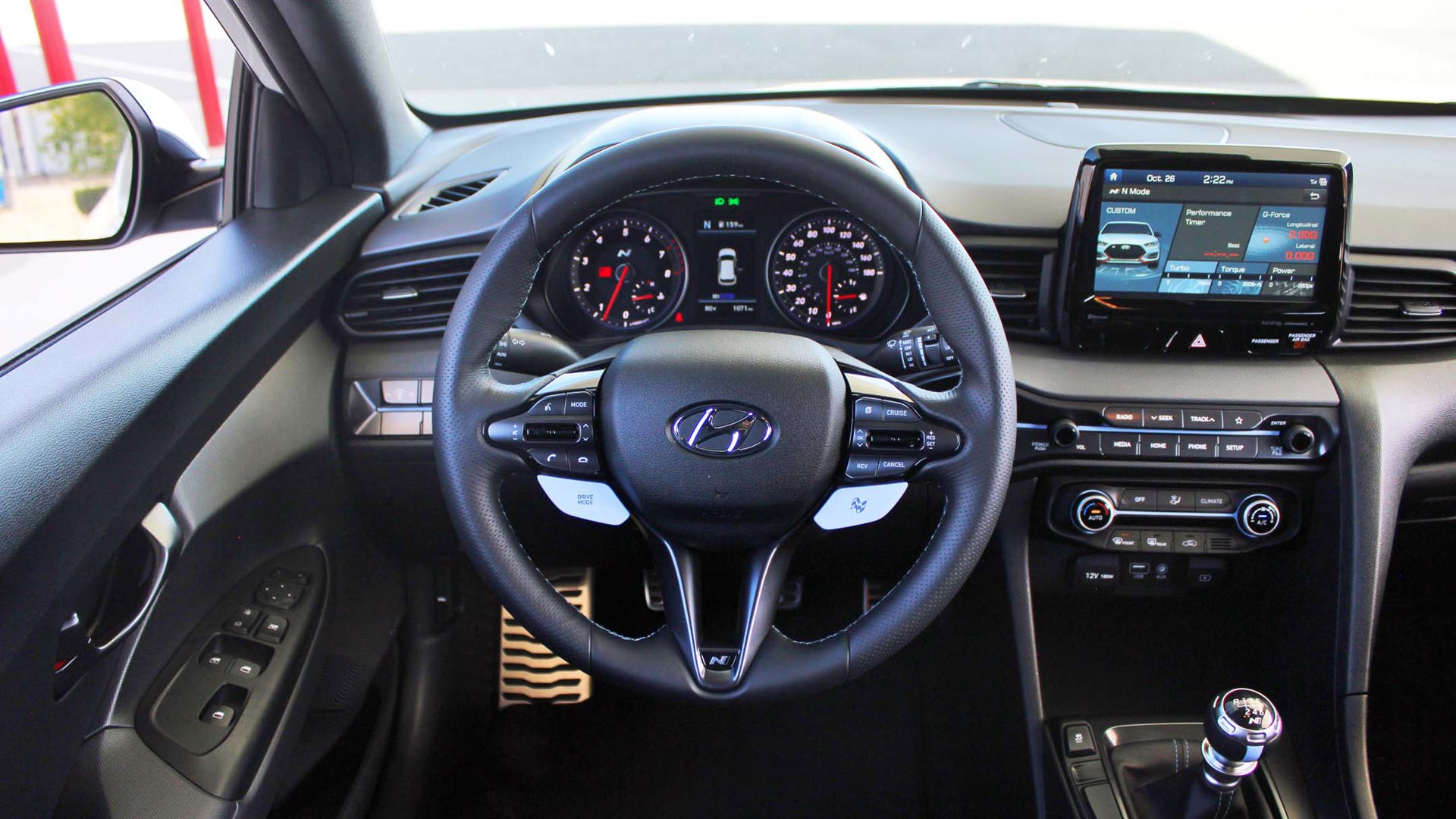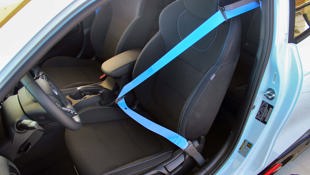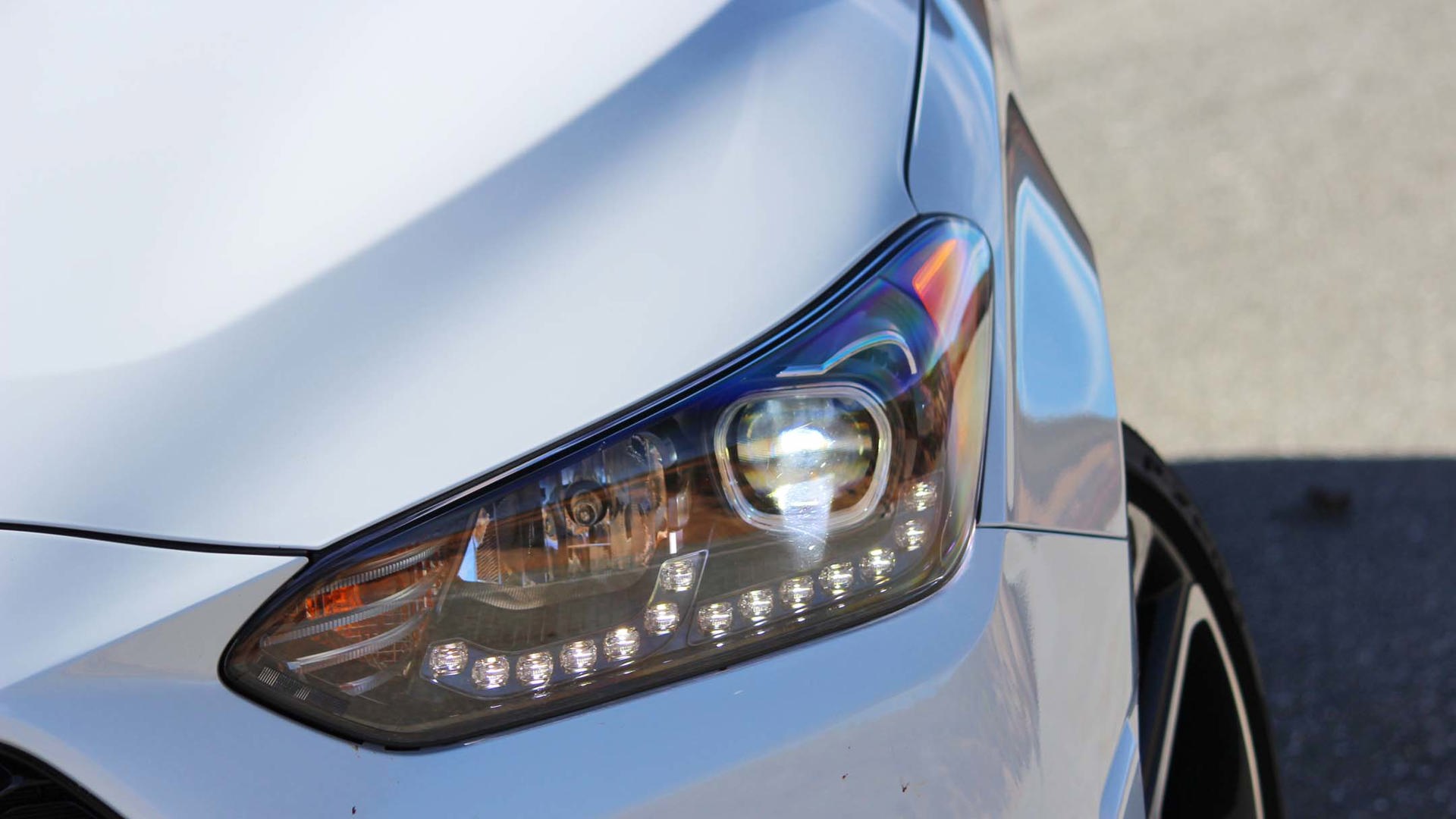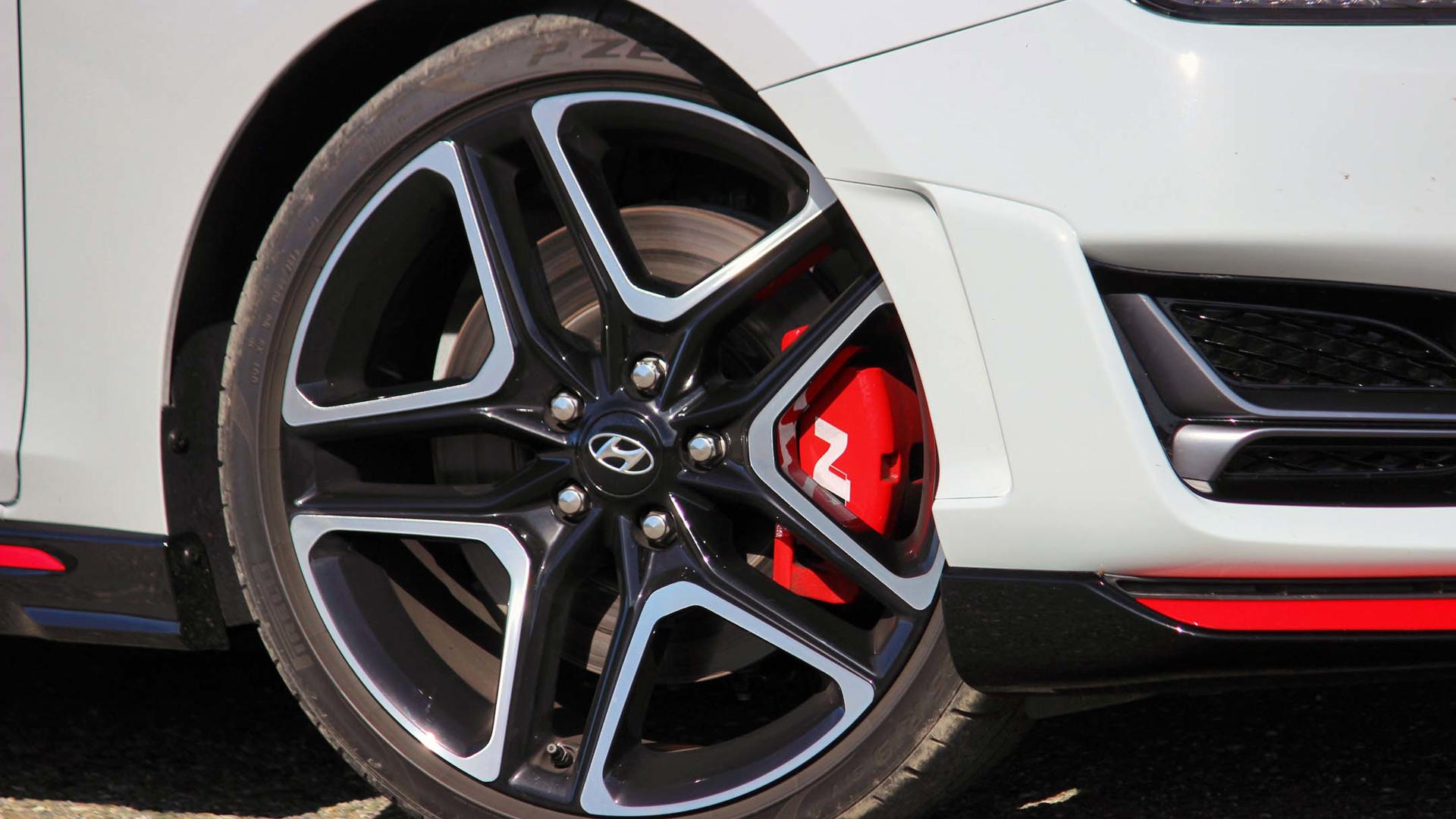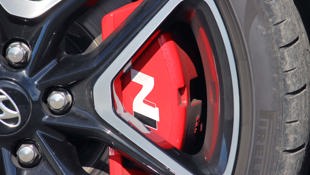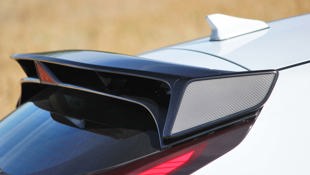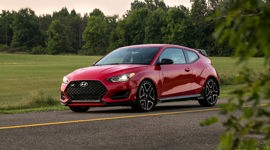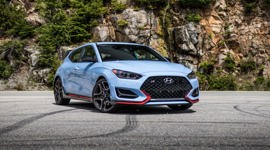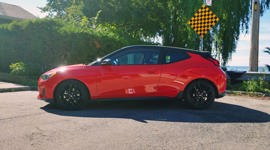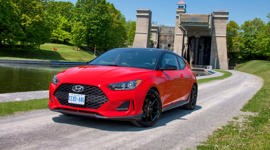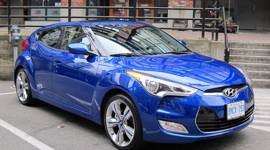Willows, CA – The 2019 Hyundai Veloster N marks the first time North American consumers get a taste of Hyundai’s N Performance brand, hitherto restricted to the racetrack and rally circuit or the roads of Europe and Australia, attached to the tailgate of the Elantra GT’s i30 cousin. That “N” branding stands for both the Veloster’s development centre in Namyang, Korea, as well as the Nürburgring in Germany, where it was tested; the official line is “Born in Namyang, honed at the Nürburgring.”
“An everyday sports car that could work as a track car out of the box.”
They’ve even programmed what they call “Karussell detection” into the ESC, recalling the famous banked curve at the ’Ring by the same name. When the system senses that the Veloster is at an extreme angle, it reprograms itself to counter that. Applicable in daily life? Hardly, but a cool Easter egg that adds a little je ne sais quoi to the car.
For the Veloster, the result is a comprehensive re-imagining from the ground up, starting with the standard fitment of an electronic limited-slip differential (eLSD), continuously variable four-valve suspension (that can also be individually set, along with the steering, throttle response, and ESC), larger front and rear brakes, 19-inch wheels shod with specially designed Pirelli P-Zero tires and functional aero addenda.
It’s only available with a six-speed manual with rev-matching capabilities – the number of revs that can be carried between downshifts can also be modified – just to show how serious Hyundai is about making a real competitor to the likes of the Honda Civic Type R and Volkswagen Golf R/GTI. Power for the turbo 2.0-litre four, meanwhile, is rated at 275 hp and 260 lb-ft; the Americans get a 250 hp version but I doubt too many here will miss that option.
Inside, special cloth-covered sport seats (very good), blue-coloured seatbelts, a chunkier wheel than what’s found on standard Velosters, new shifter design, and sequential shift lights are all N-specific touches. Canadian cars also get a heated steering wheel and front seats as standard. Exterior colours, meanwhile, are limited to Performance Blue, Chalk White, and Phantom Black for now; the American market gets a red, too, and Hyundai is waiting to see how popular that colour is before deciding whether or not we’ll get it here.
“The whole strategy with this car was to have an everyday sports car that could work as a track car out of the box,” said Braden Chapin, senior project manager responsible for Hyundai N-Line. So, we were let loose on both an autocross track as well as the undulating Thunderhill race track about 90 minutes north of Sacramento. Clearly, they aren’t messing around – but were they bluffing? Could this little Korean hatch with the extra door really be turned into a track slayer?
It sure sounds like it can. In order to provide the full touring-car-for-the-road effect, special attention was paid to the exhaust note. We’re not just talking about special baffling, either – though there’s that, too – in N mode the ignition timing changes just so you can get more pop-pop-pop on the overrun. N mode is the most hardcore of the four drive modes (along with Eco, Normal and Sport; there’s actually five if you include N-Custom) on offer; so hardcore, in fact, that it gets its own steering-wheel-mounted activation button.
“Hitting that button is like Dr. Jekyll and Mr. Hyde,” said Chapin. All you have to do is rev the engine at a stop in either mode to tell the difference; this is no bluff on Hyundai’s part.
Of course, earning any kind of comparison to that famous Stevenson character (characters?) means that you have to do more than just talk the talk. Ignition timing or no, exhaust baffling is something that’s been done by performance manufacturers for quite some time now. Heck, Jaguar rented out the Park Avenue tunnel in Manhattan during the 2016 New York Auto Show so we could drive their F-Type SVR through there at full-chat in Dynamic mode, just to hear how loud it was.
Indeed, there’s way more to the Veloster N once that button is pressed. It doesn’t feel hugely faster on throttle tip-in (unless we’re comparing N mode to Eco mode, of course) but that’s where any similarities end.
The big thing is the chassis. In N mode, the dampers stiffen to the point that on rebound, it’s as if cables between the chassis and the tarmac below are tightened to haul everything to the pavement. It’s actually a little much for normal driving, even on smooth Californian roads, as I wouldn’t call the progress “comfortable” – I even found myself skittering across the tarmac from time to time.
Of course, once on either the autocross track or the main course, dampers set to N was a much better fit, though a few of my colleagues thought the dampers were too firm even for the autocross course. Personally, I liked them in N in that scenario as there is a little more body roll than you might think otherwise.
After the suspension tuning, I found the biggest bonus provided by the conversion to N was the steering, which displayed notable change at either end of the spectrum. In Sport and Sport+, it’s properly heavy and while you won’t get much change in road feel between the various settings, it’s so good in the first place – granular, even – that I found no issue there. You’ll want to keep it in the less aggressive settings for most daily work, however; the otherwise heavy weight is a definite chore during slow, small manoeuvres. It’s an issue that’s not helped by the fact that the turning radius is a little larger than you’d expect for a car this size.
All that aside, this was one fun car to put through its paces especially on the autocross track, where we ran numerous, repetitive laps to really allow us to home in on the strengths of the car, as well as decide which of the multitude of available drive settings worked best. The Veloster N is a car that demands commitment from the driver when on boil. It asks you to brake later, as these binders are ultra-effective; to get on the throttle sooner on exit, the eLSD doing a very good job of scrubbing off both understeer and torque steer as you thrash through the cones – or through the twisties on your favourite B-road.
It pulls you out with gumption and while I won’t go so far as to say it’s RWD- or AWD-like, the fact that I managed to play with the tail a bit in certain weight-transfer situations is a good thing for those who want a proper performance feel from their FWD hot hatch.
Then, of course, there’s all the other stuff: the Veloster N gets the same infotainment system as the rest of the lineup, but if you take into account how many other electronic nannies have been scrubbed in an effort to keep costs down, we’re lucky to be getting anything at all. There’s no lane-departure warning, no adaptive cruise control, no blind-spot warning, no wireless charging; and if you want navi, you’re going to have to make use of either standard Apple CarPlay or Android Auto, as a native GPS system isn’t in the cards.
The result, though, is that you can get a properly performance-tuned compact hatch for just $34,999 all-in, and there are no factory option packages to speak of. That price undercuts both the Golf GTI and Civic Type-R; and while you’ll be paying a $5,000 premium over a Honda Civic Si Coupe, and a few bucks more over the base cost of a Mini JCW three-door, the Veloster N gives you an extra door over those two, more power, and a much more committed attitude.
The only real issue then, is getting your hands on one. Hyundai says that only 100–200 will be available in Canada for the 2018 calendar year (as a ’19 model), gauging demand to see how many will need to be built for calendar year 2019.
Luckily, the Veloster N will be available in all dealers when it arrives later this year, so hopefully you won’t have to go too far to order one.
If the Veloster N is too hardcore for you, know that Hyundai is also bringing the “N-Line” – a kind of quasi performance sub-line of specially tuned vehicles – to Canada. The luxury manufacturers have been doing it for years – think Audi S-Line, BMW M Performance or Lexus’ F-Sport line – but Hyundai’s mainstream competition has made do with one or two performance models such as the Honda Civic Si or VW Golf GTI. With the N sub-brand, things will be different.
“We’ve managed to hit a bit of a white spot in the segment,” said Chapin. “No one else is really doing this.”
N-Line will be more akin to a trim level applied to vehicles across Hyundai’s lineup, starting with the 2019 Elantra GT. Cars with N-Line designation will get specific chassis tuning, some stylistic additions including wheels and specialized body panels, as well as unique interior touches.
Pricing: 2019 Hyundai Veloster N
Veloster N: $34,999

